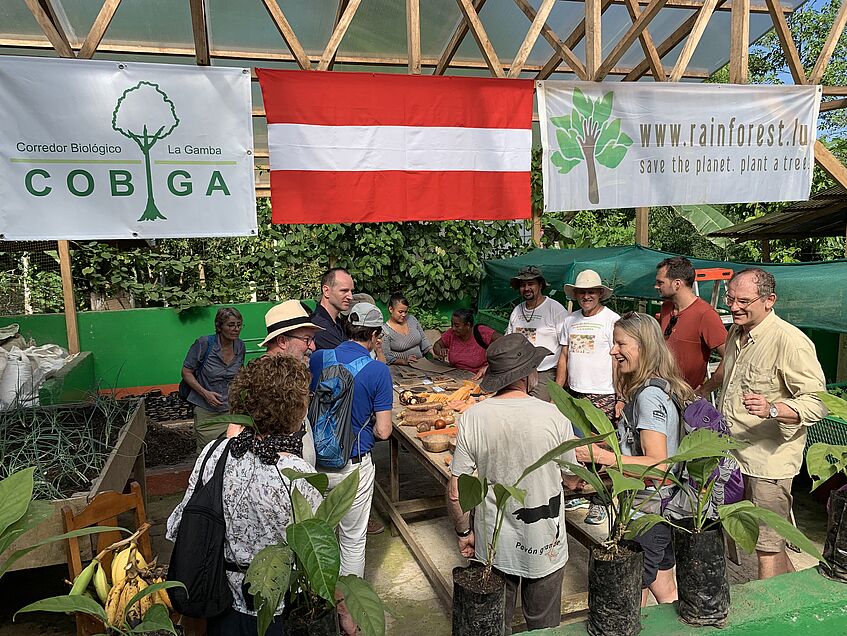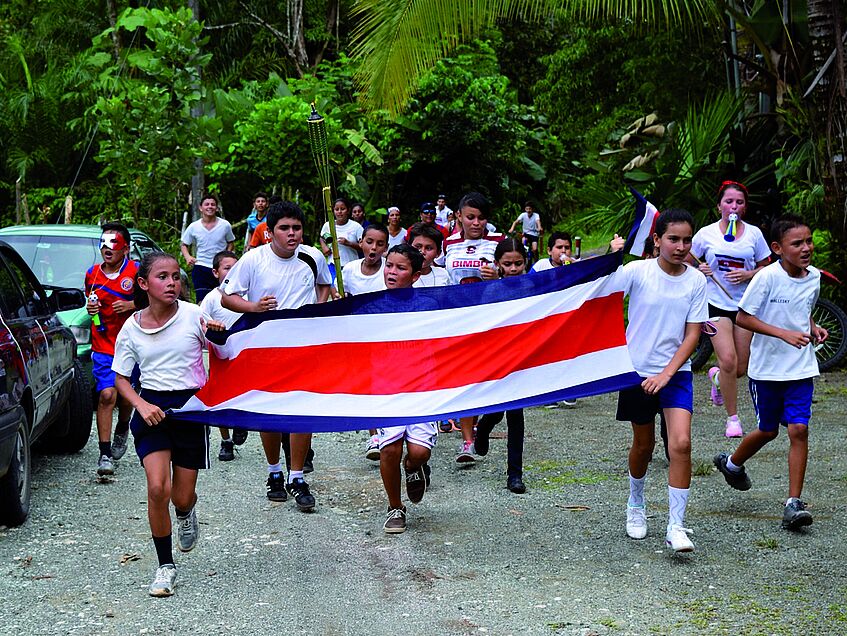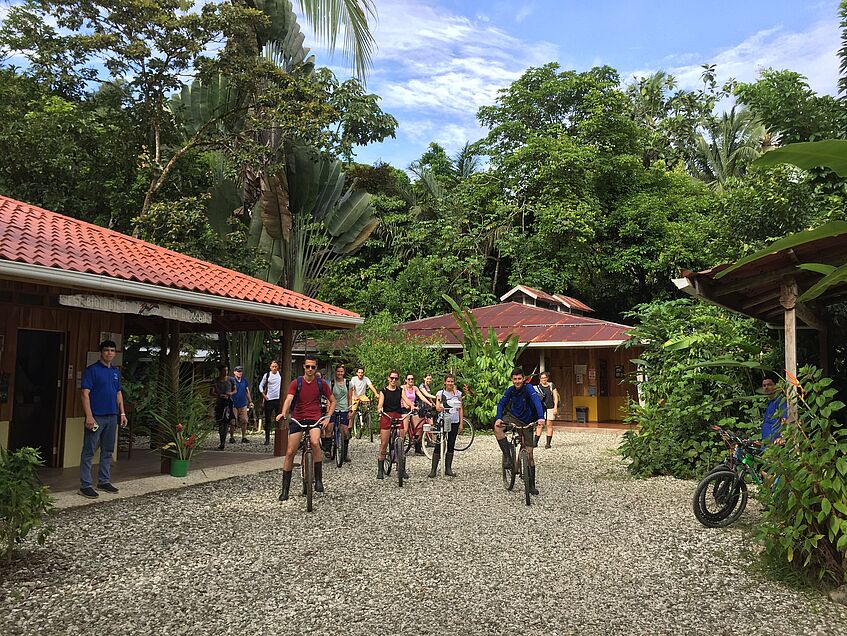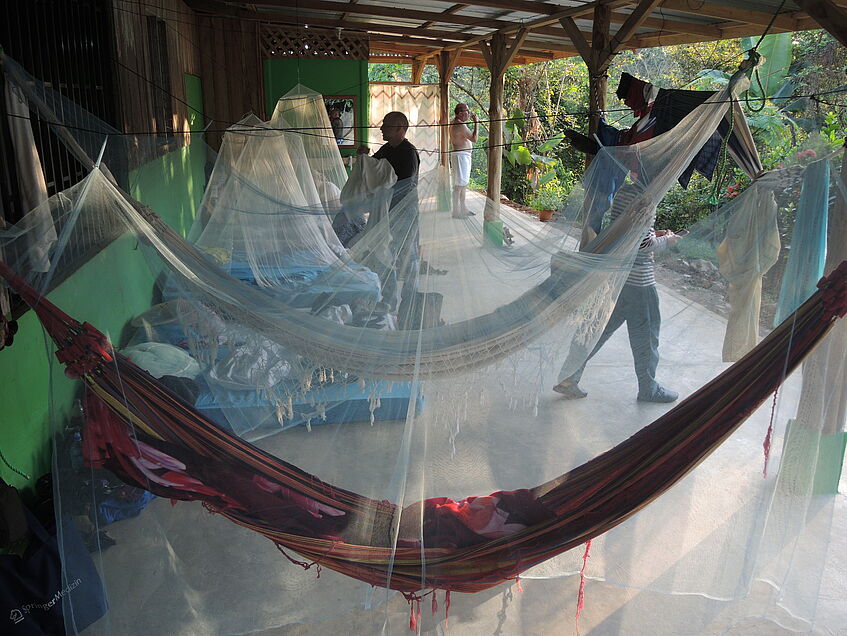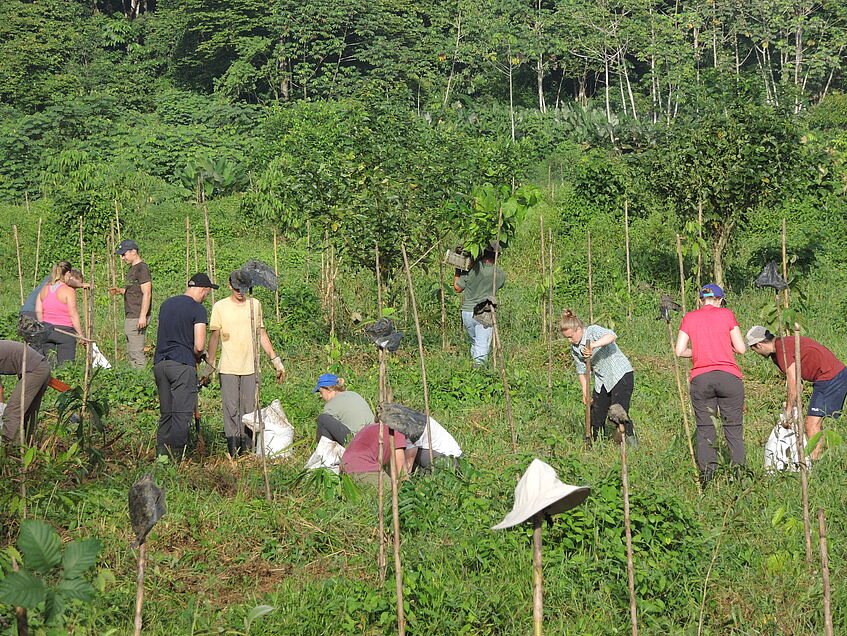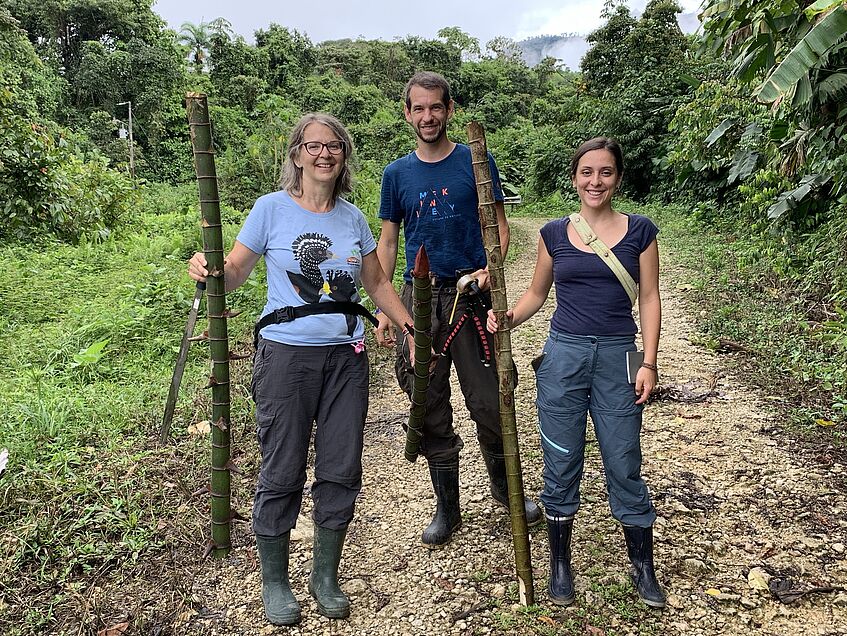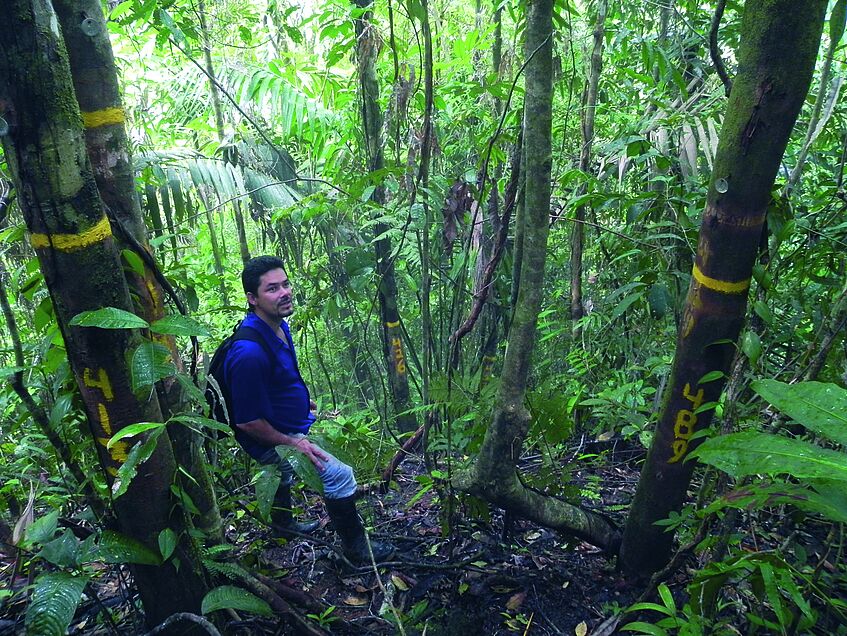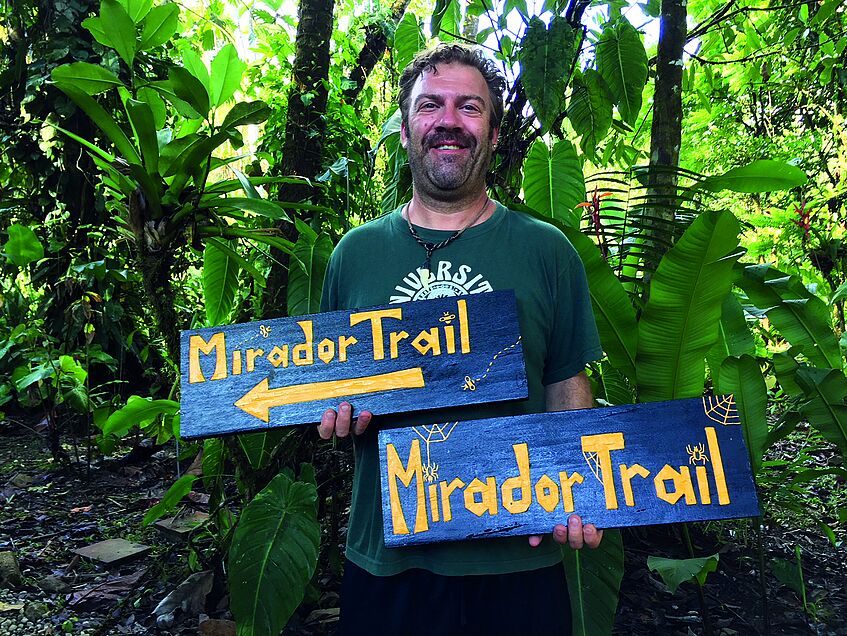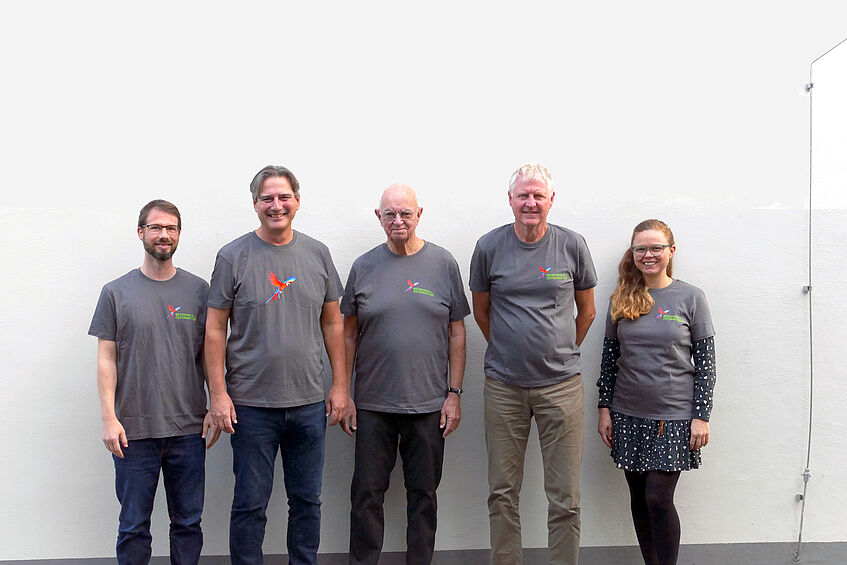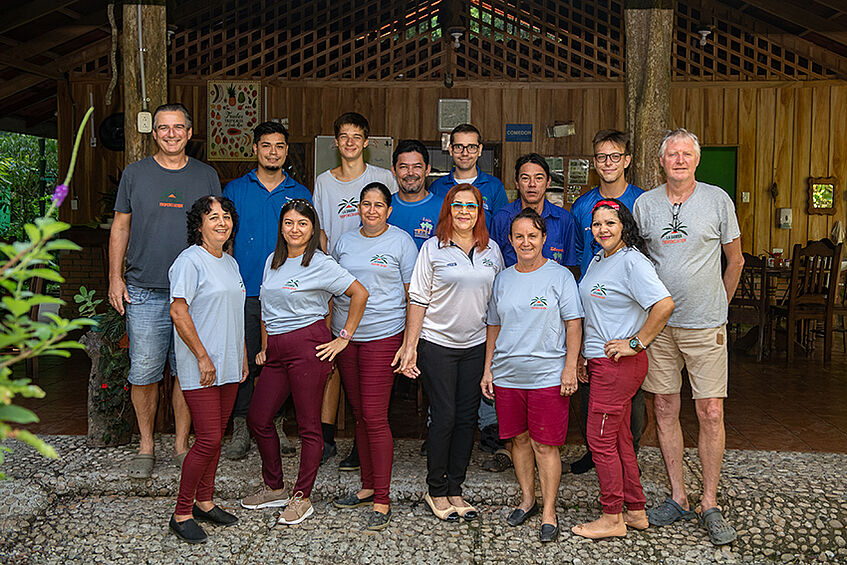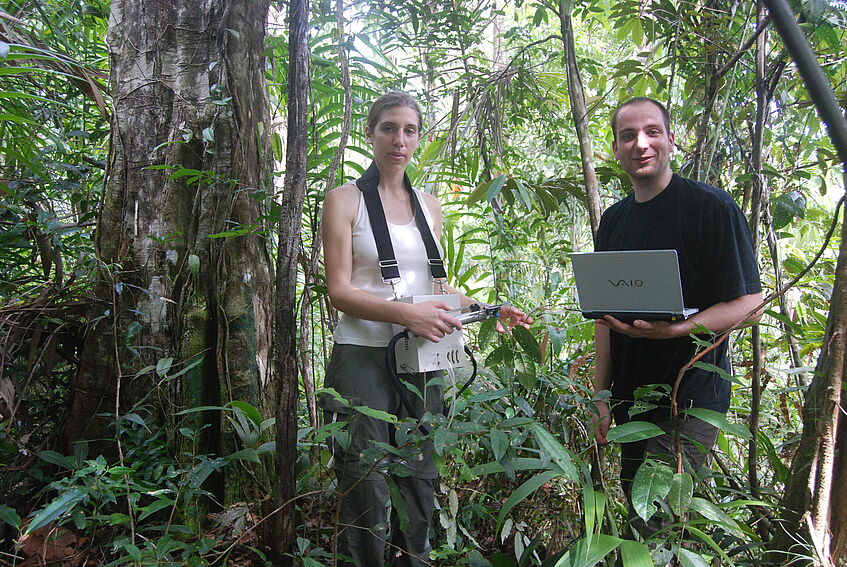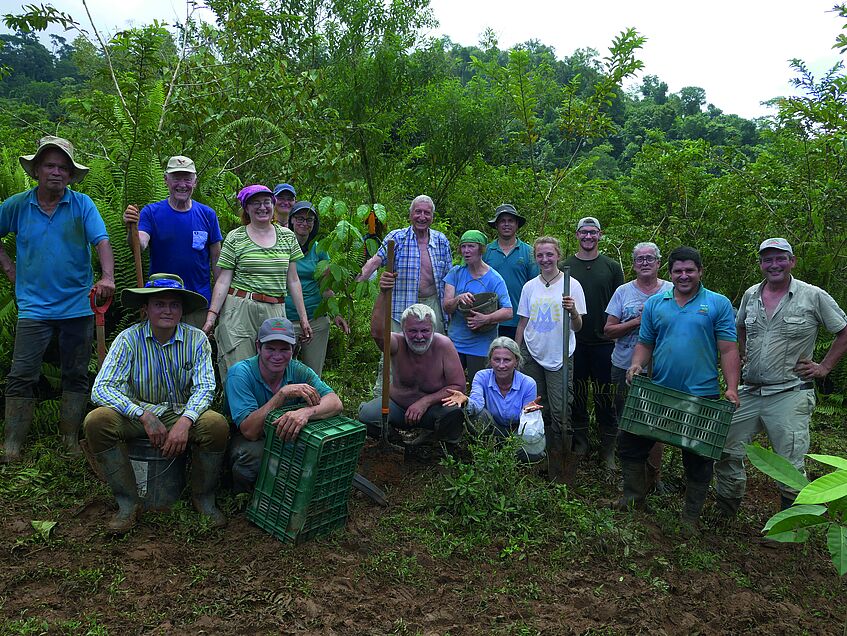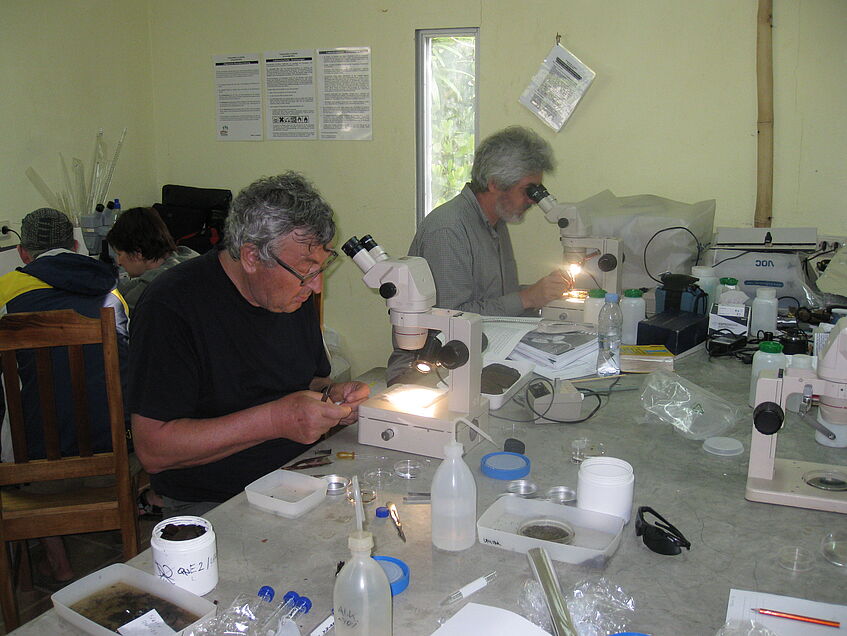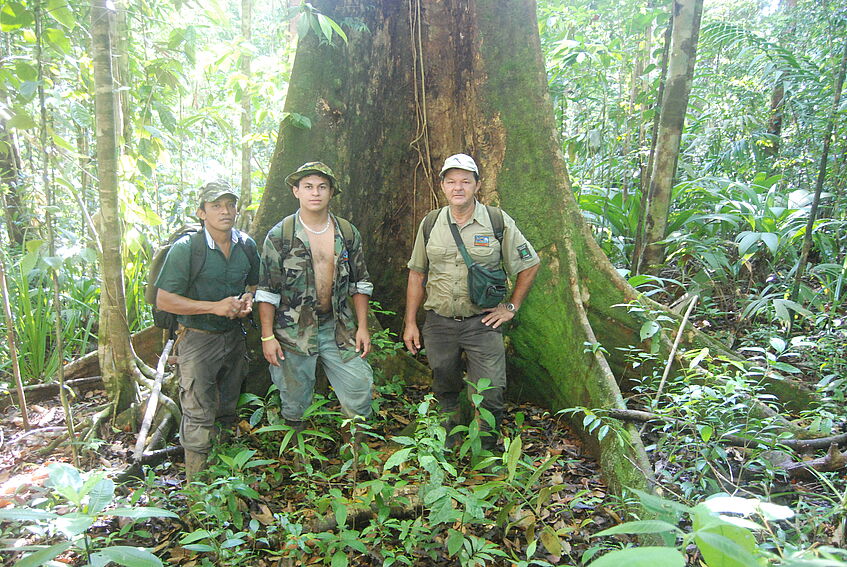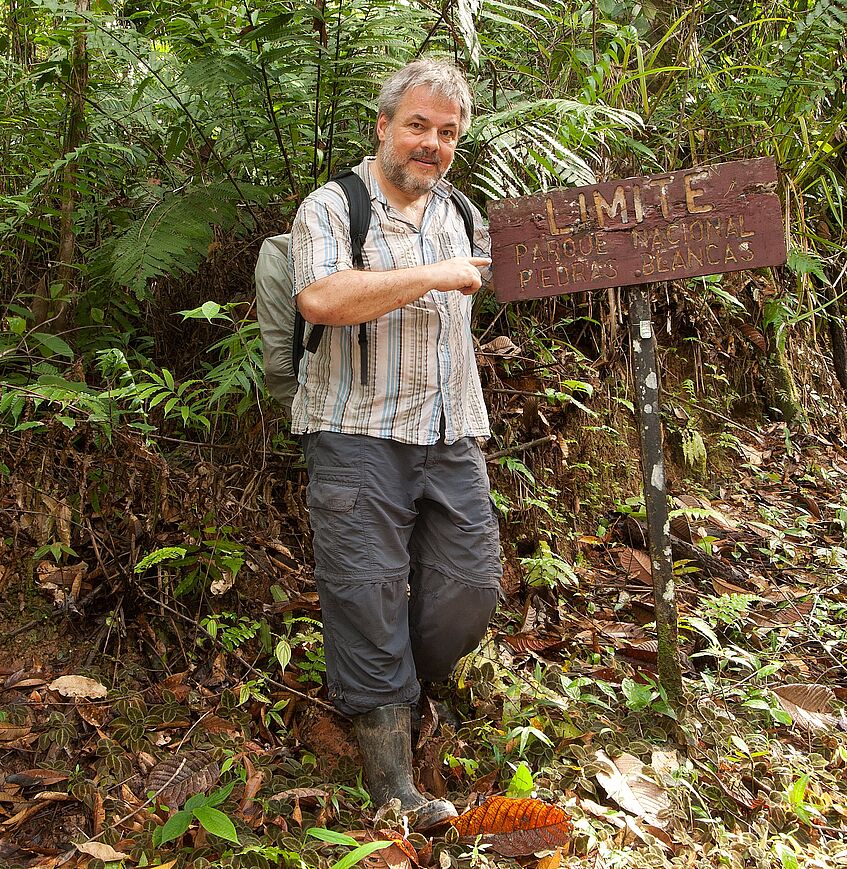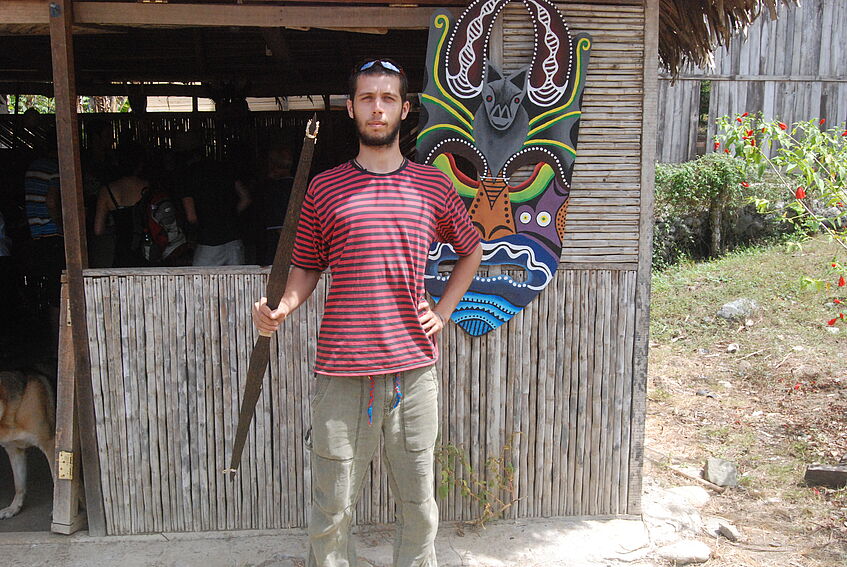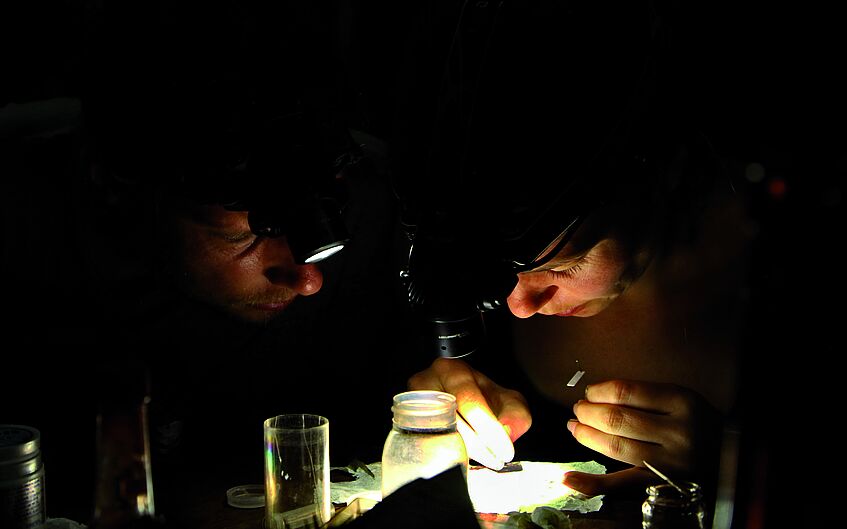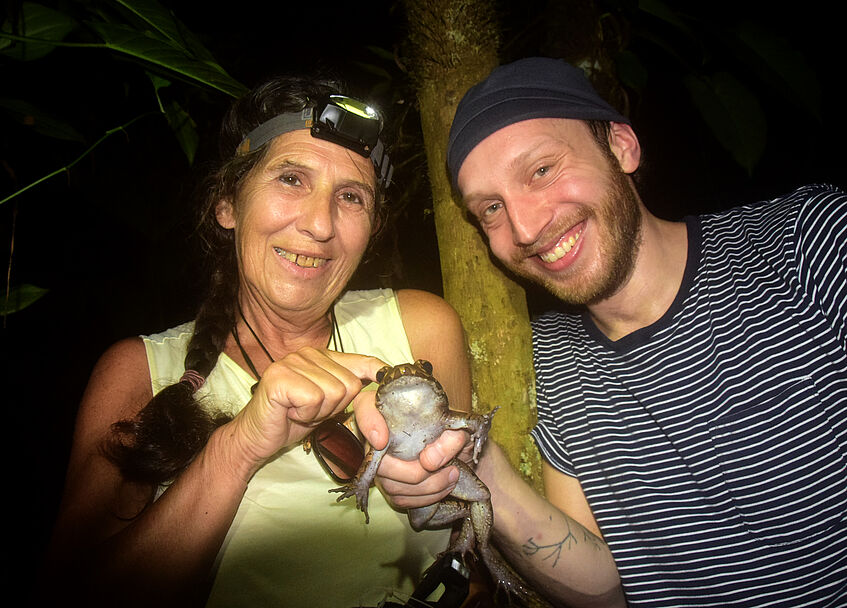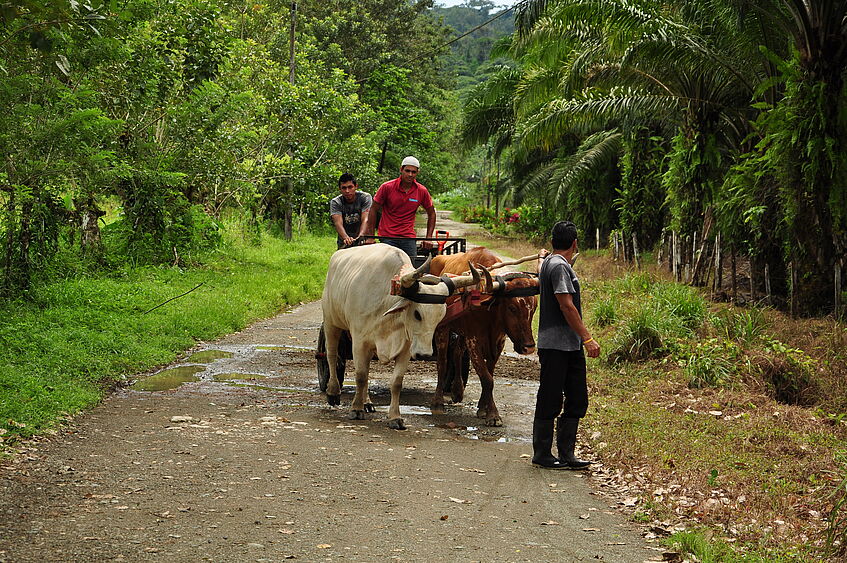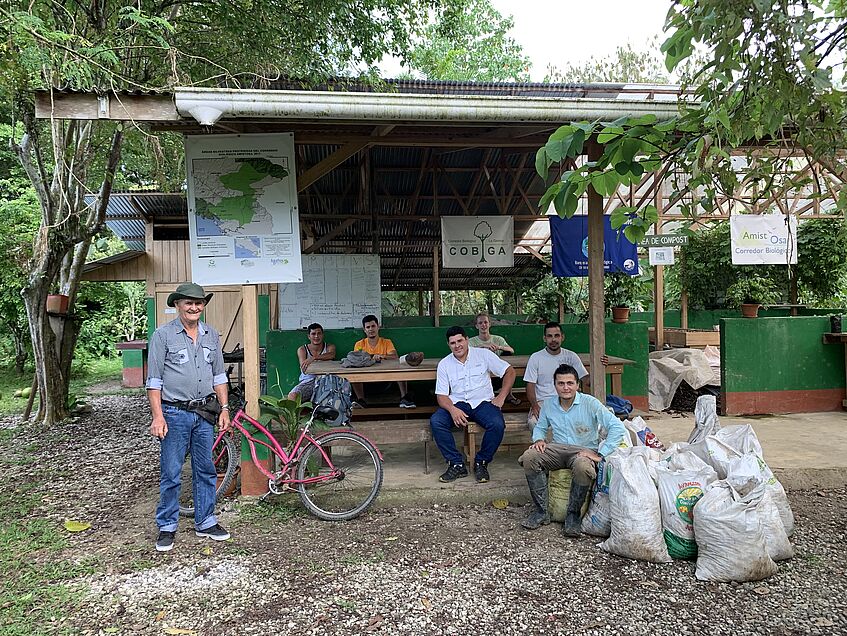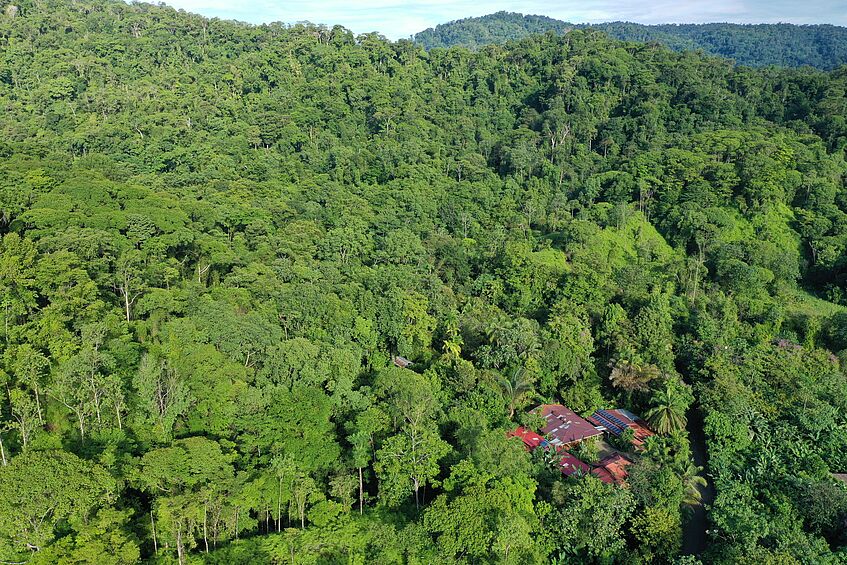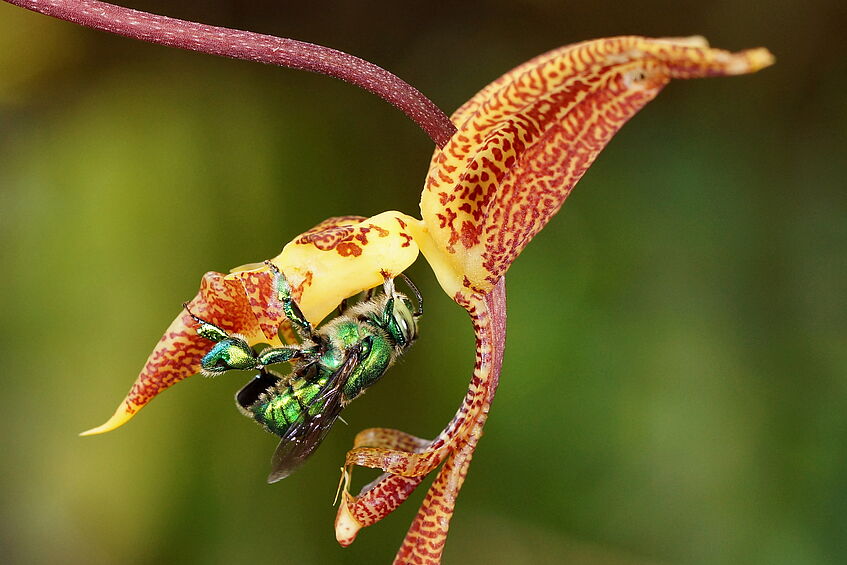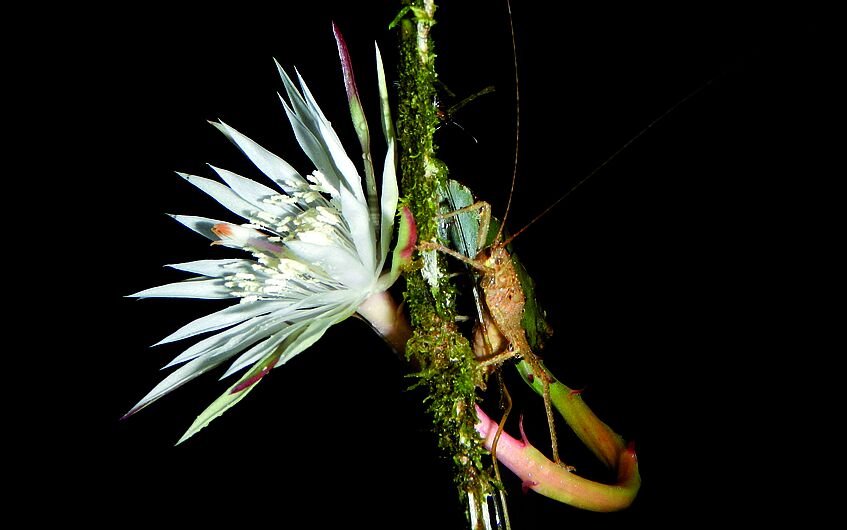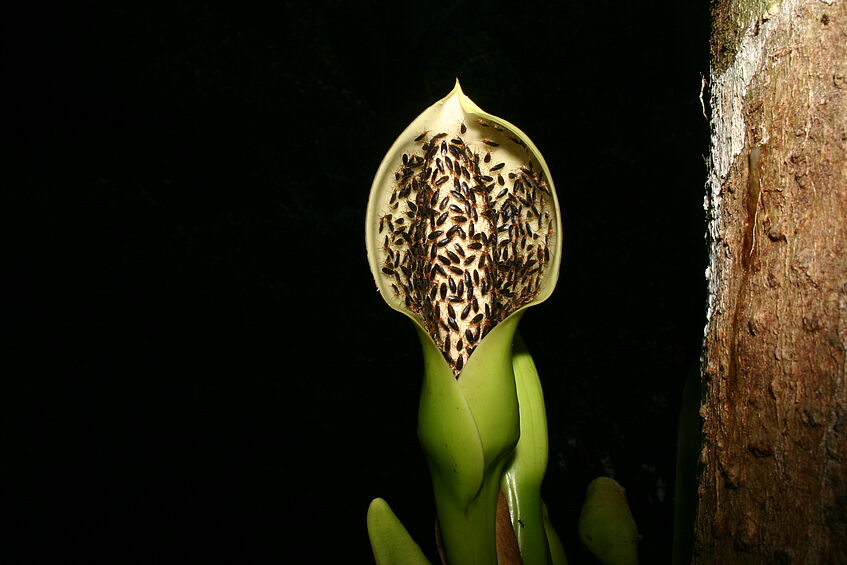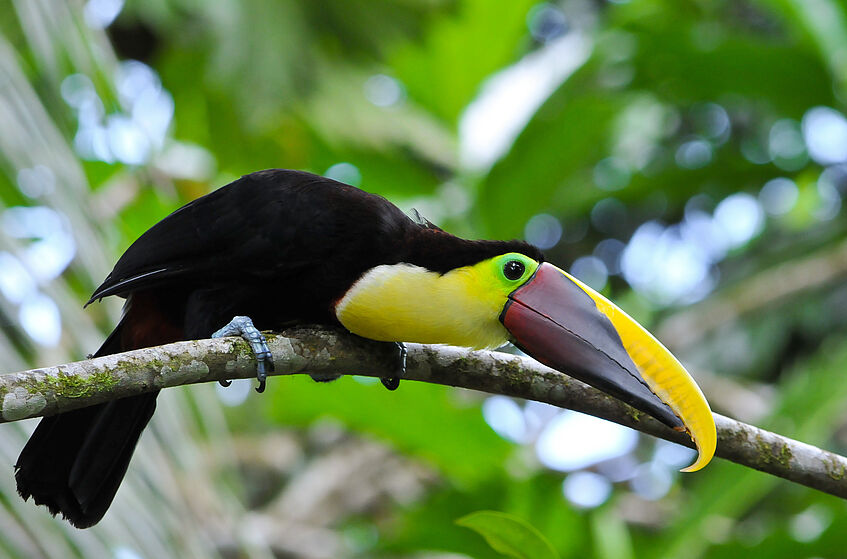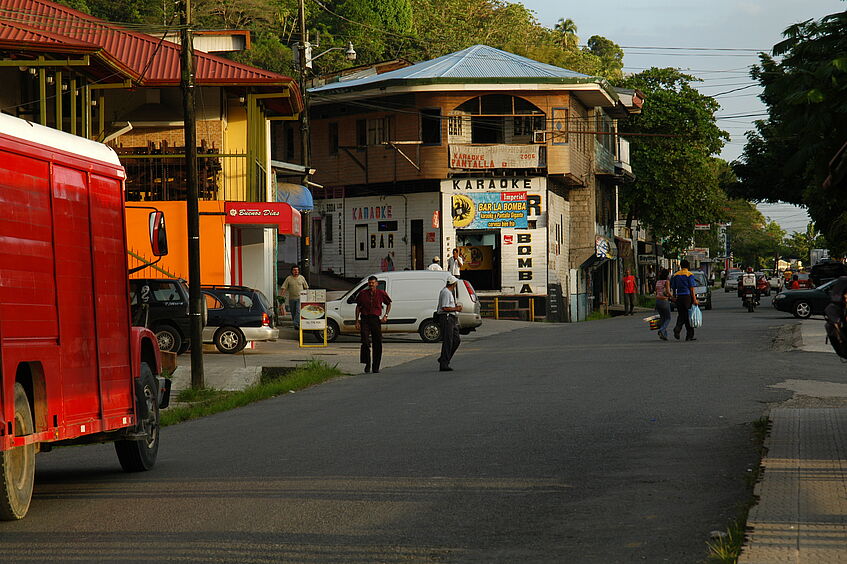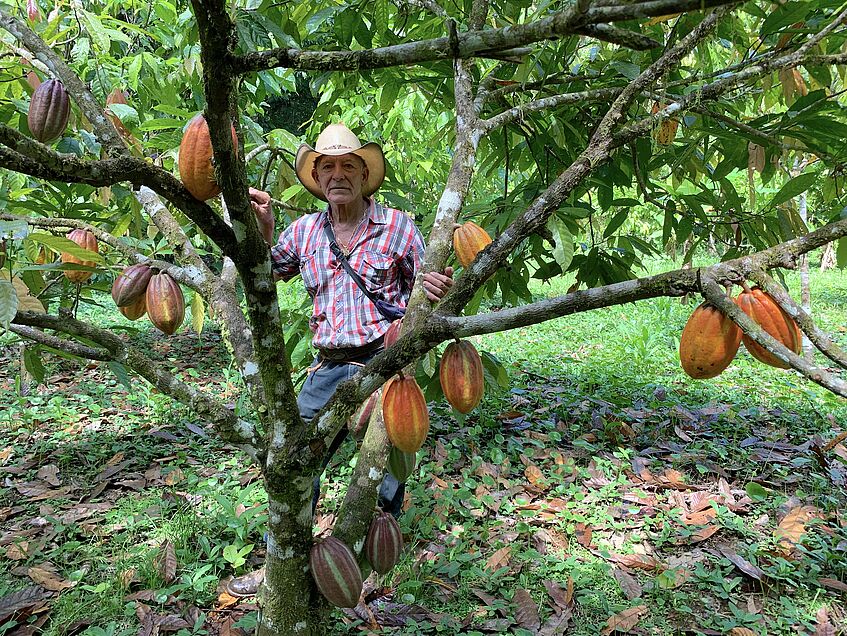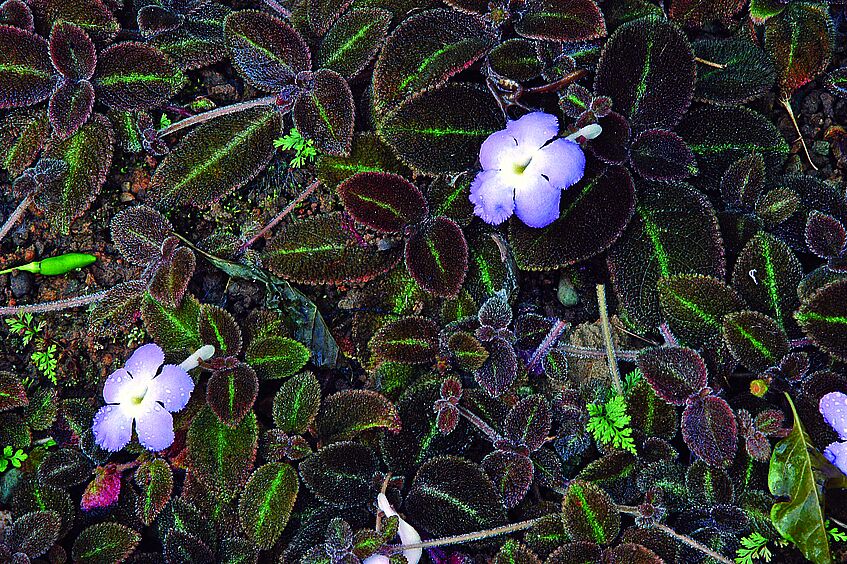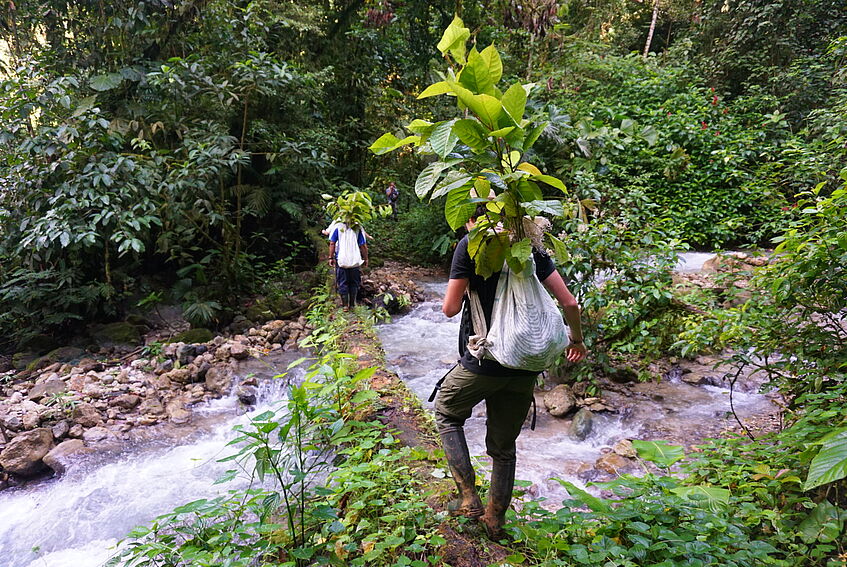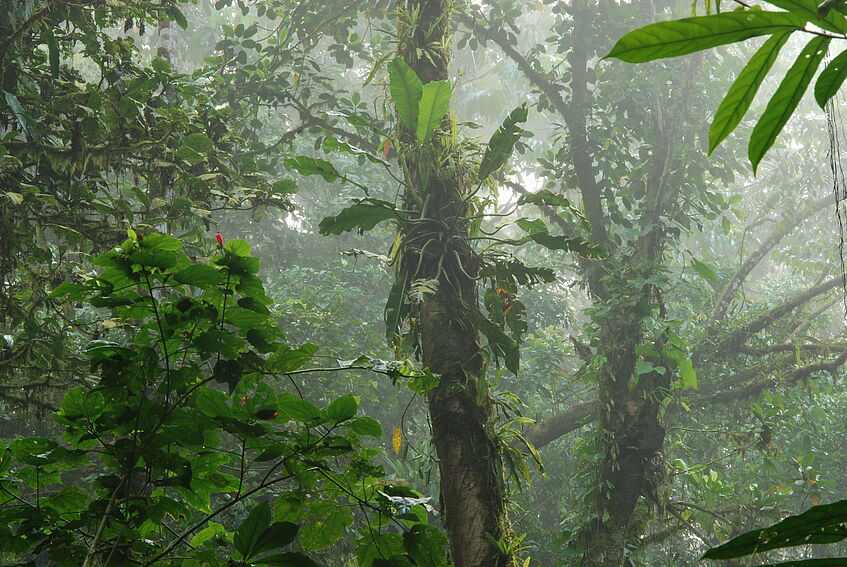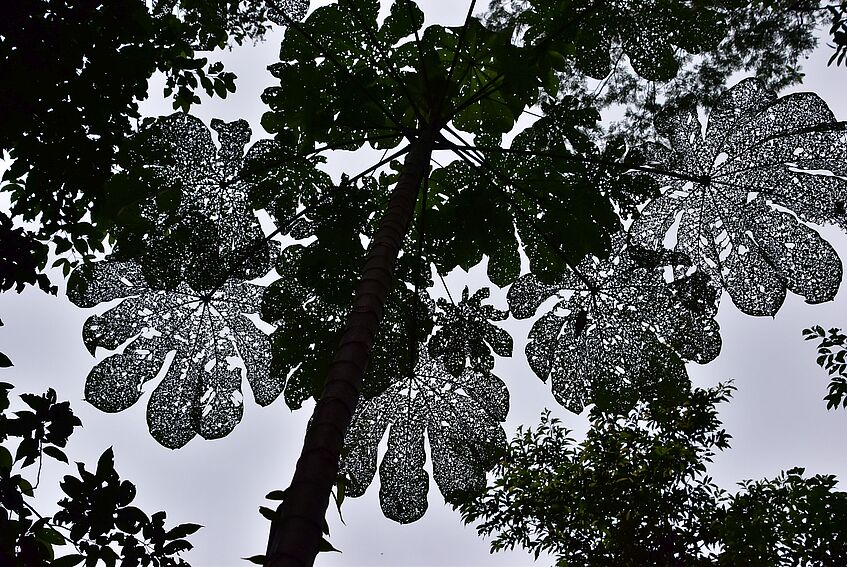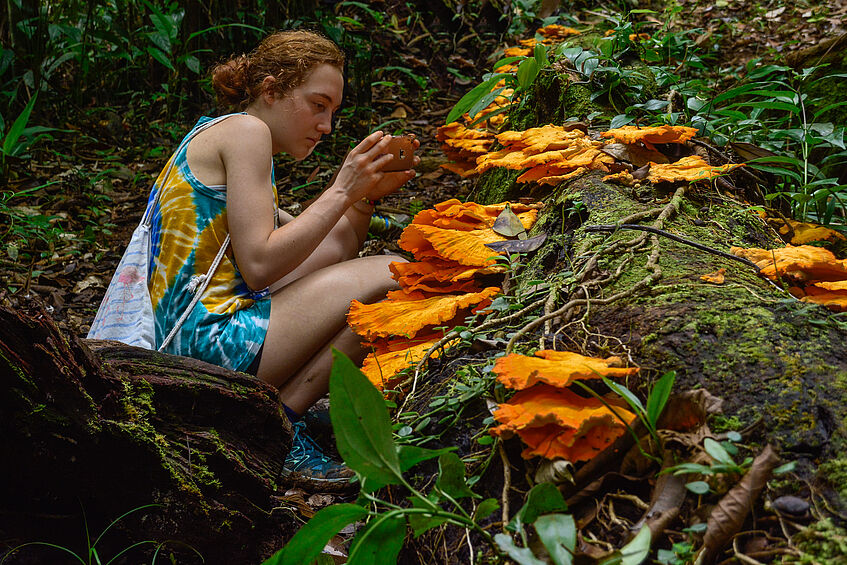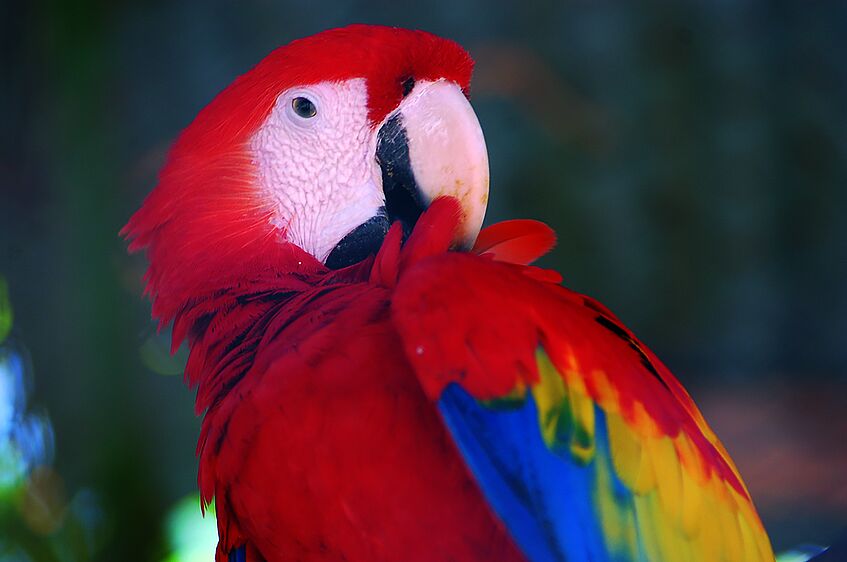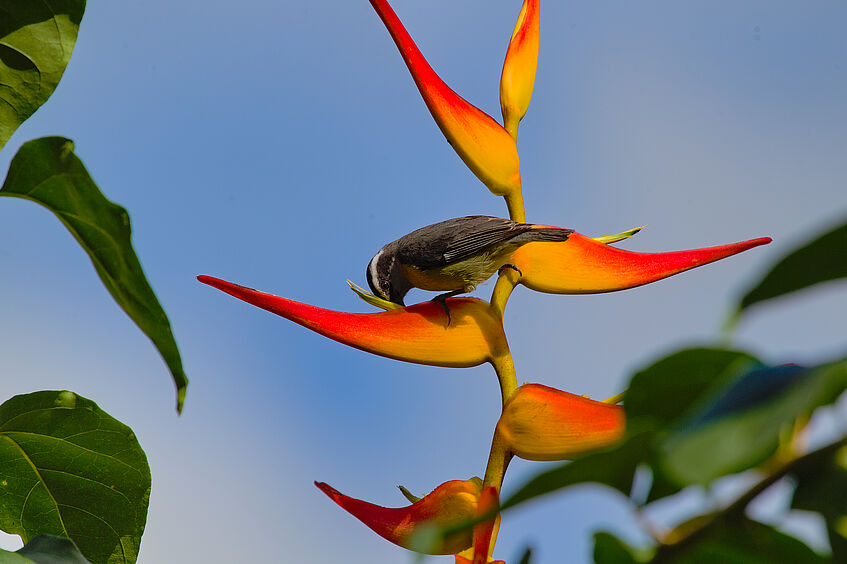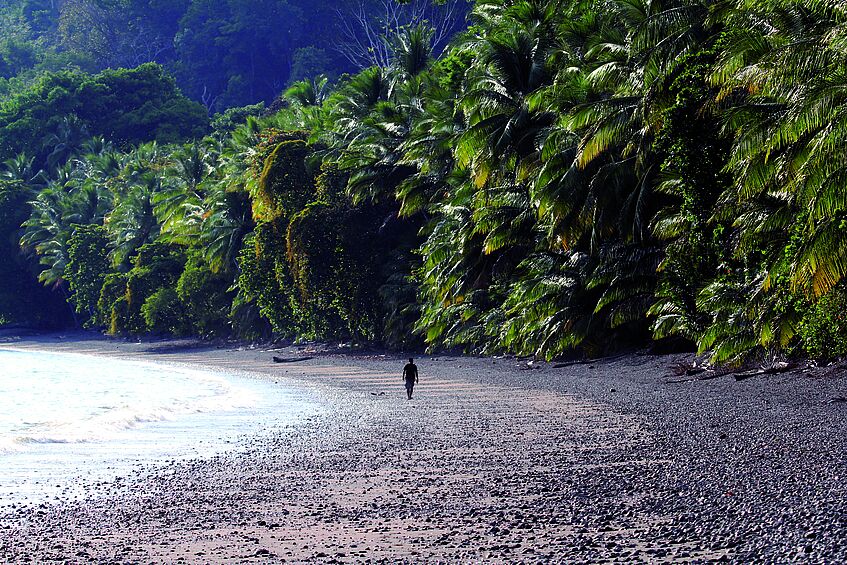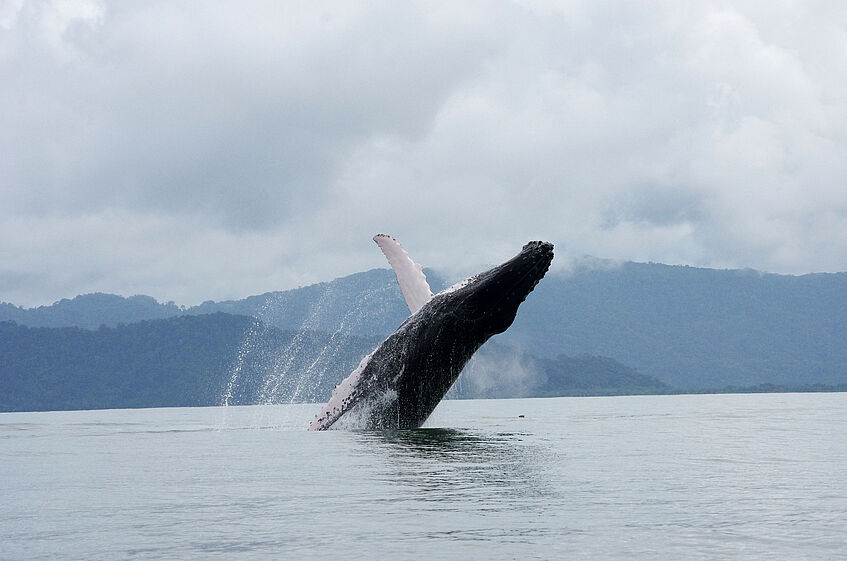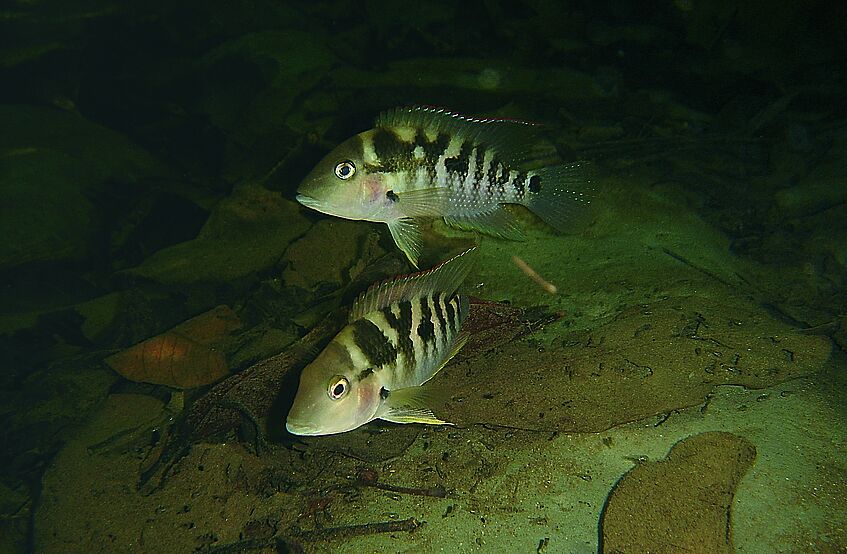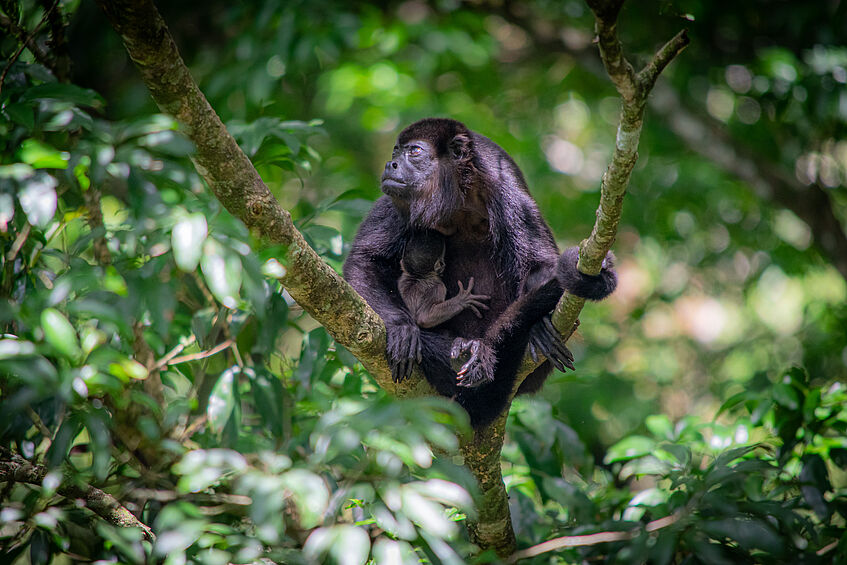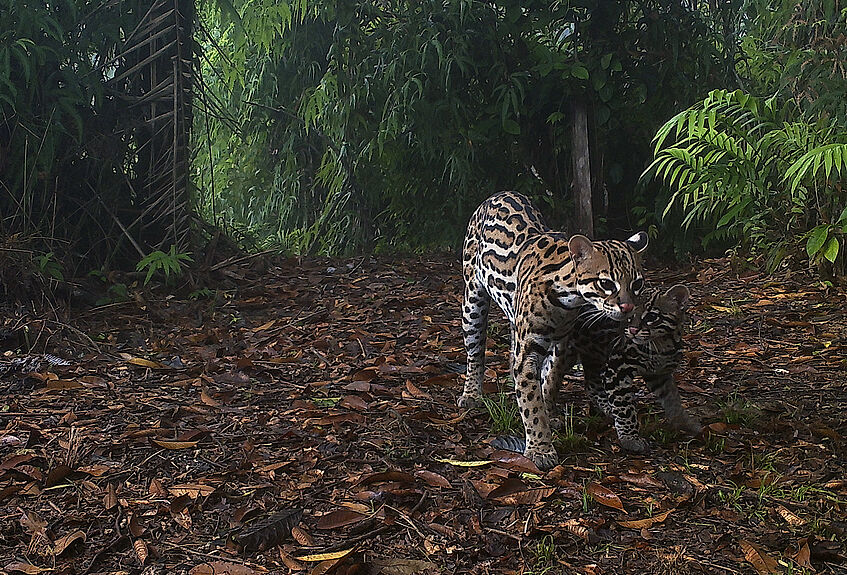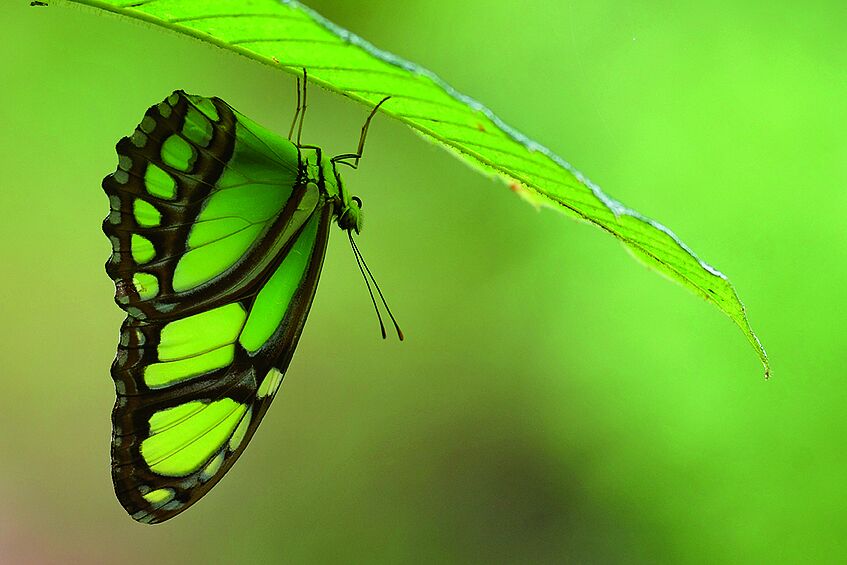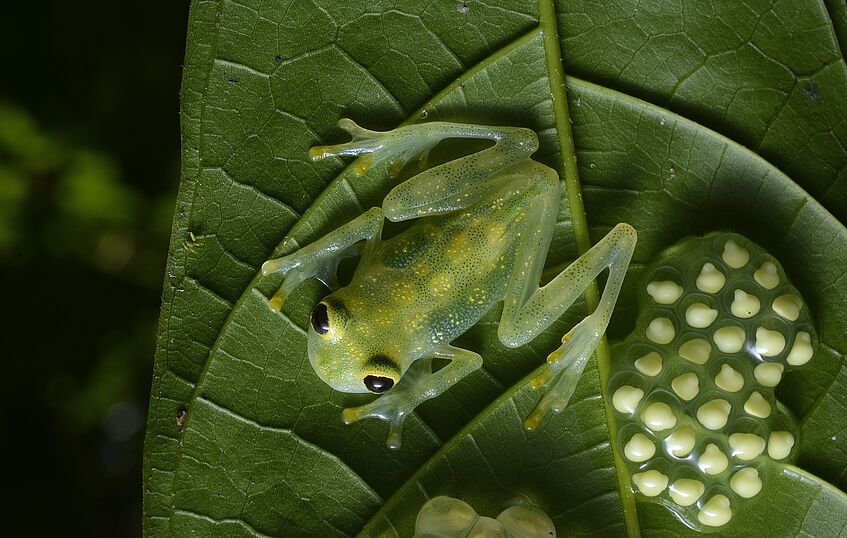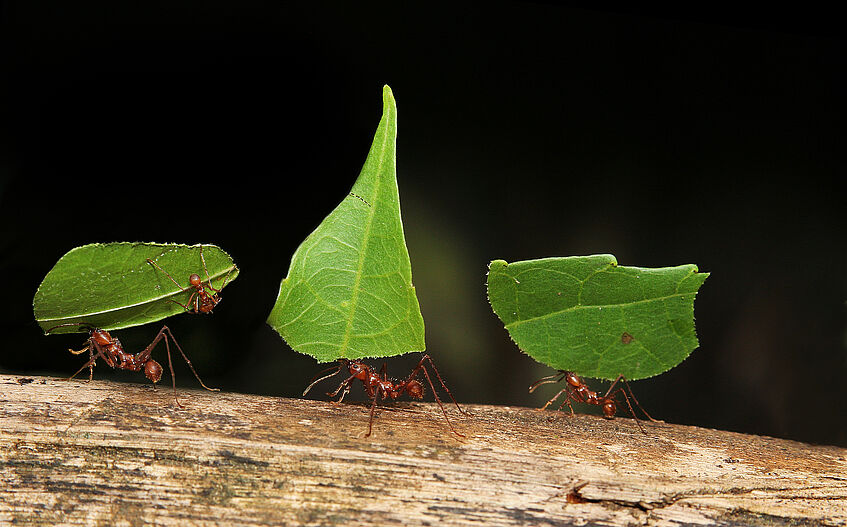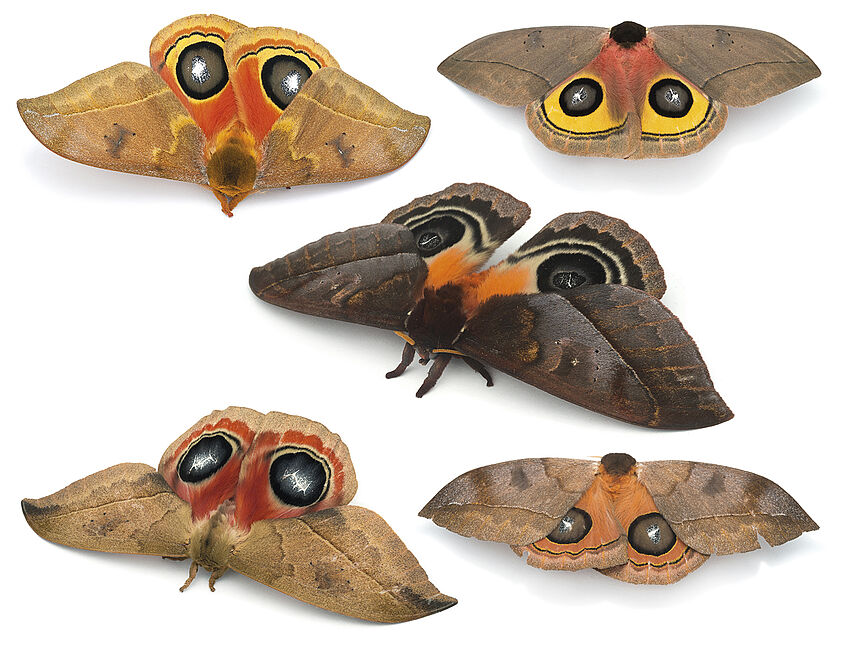Photo - exhibition / Foto Ausstellung
The Tropical Station La Gamba in Costa Rica – since 1993
The Tropical Station La Gamba is a research station of the University of Vienna in the Pacific region of Costa Rica. Numerous researchers and students work each year at the tropical station and return home with new findings and stunning images. The photo exhibition showcases both nature and research done in the biodiverse rainforests and the adjoining cultivated areas on 30 panels.
Die Tropenstation La Gamba in Costa Rica – seit 1993
Die Tropenstation La Gamba ist eine Forschungsstation der Universität Wien in der pazifischen Region Costa Ricas. Zahlreiche Forschende und Studierende arbeiten Jahr für Jahr in der Tropenstation und kehren mit neuen Erkenntnissen und beeindruckenden Bildern nachhause zurück. Die Foto-Ausstellung präsentiert auf 30 Tafeln Natur und Forschung in den artenreichen Regenwäldern und den angrenzenden Kulturflächen.
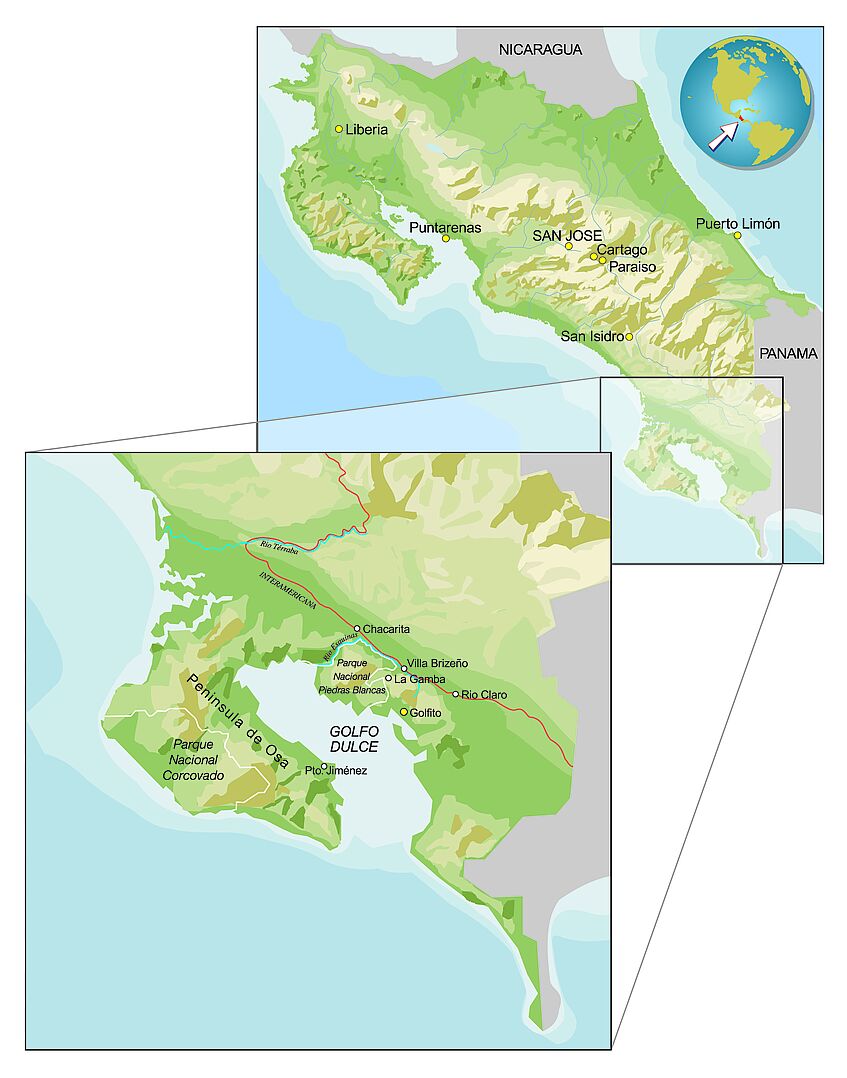
Living and working at the La Gamba Tropical Station
The Tropical Station was established in 1993 with the support of Michael Schnitzler, founder of the Rainforest Association of Austrians. At the edge of the Piedras Blancas National Park, the research station in the immediate vicinity of the village of La Gamba offers optimal conditions for tropical research from botany to meteorology. The station is managed by co-founders Werner Huber and Anton Weissenhofer from the University of Vienna. Up to 40 guests can be accommodated on site at any one time. The station owns 5 km² of land, including forests, pastures and reforestation areas. These areas serve not only science but also nature conservation in one of the most biodiverse regions on earth.
Leben und arbeiten an der Tropenstation La Gamba
Die Tropenstation entstand im Jahr 1993 mit Unterstützung von Michael Schnitzler, dem Gründer des Vereins Regenwald der Österreicher. Am Rande des Piedras Blancas - Nationalparks bietet die Forschungsstation in unmittelbarer Nähe zur Ortschaft La Gamba optimale Bedingungen für Tropenforschung von der Botanik bis zur Meteorologie. Geleitet wird die Station von den Mitbegründern Werner Huber und Anton Weissenhofer von der Universität Wien. Bis zu 40 Gäste können gleichzeitig vor Ort untergebracht werden. Die Station besitzt 5 km² Grund, darunter Wälder, Weiden und Wiederbewaldungsflächen. Diese Flächen dienen nicht nur der Wissenschaft, sondern auch dem Naturschutz in einer der artenreichsten Regionen der Erde.
ORCHIDS AND ORCHID BEES
Orchid bees (Euglossini) have mastered the secret of perfume making. The male bees collect the flower scents of orchids and other plants with their legs. They use these scents to attract the female orchid bees. In the “Rainforest of the Austrians”, there are about 240 different species of orchids and 25 species of orchid bees.
ORCHIDEEN UND PRACHTBIENEN
Prachtbienen (Euglossini) beherrschen das Geheimnis der Parfumherstellung. Männliche Tiere sammeln mit ihren Beinen die Blütendüfte der Orchideen und anderer Pflanzen. Mit diesen Duftstoffen locken sie die weiblichen Prachtbienen an. Im Regenwald der Österreicher gibt es etwa 240 verschiedene Arten von Orchideen und 25 Prachtbienen-Arten.
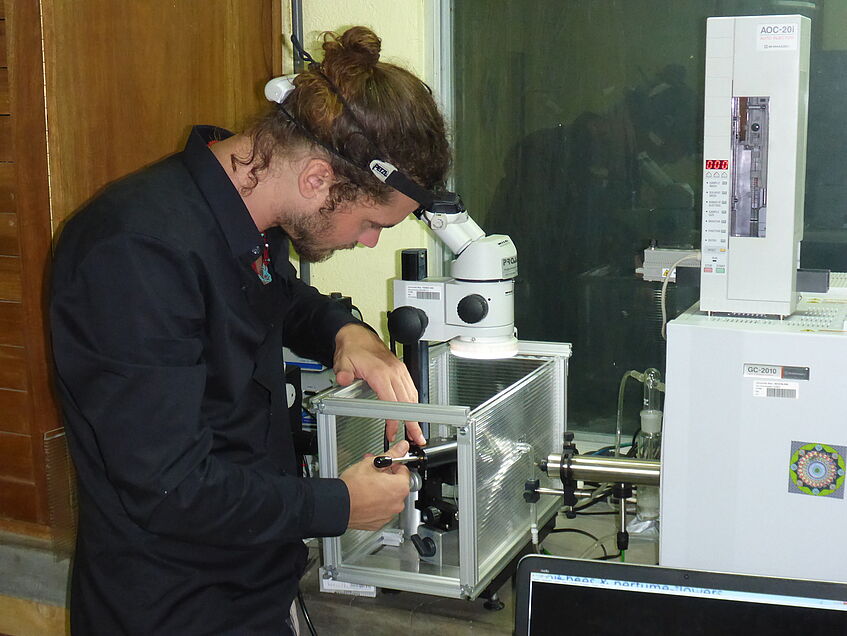
Research at the La Gamba Tropical Station
Florian Etl from the University of Vienna uses a gas chromatograph to separate floral scents into their components. With the help of an electroantennogram, he then tests the antennae of insects to see which scents they perceive. This makes it possible to identify scents that play a role in attracting the insects. These scents are then exposed to the insects in field trials.
Scientific work has been going on at the La Gamba Tropical Station since 1993. Scientists from various countries conduct research at the station and publish their results in renowned publications. The closeness to various tropical habitats from primary forests to cattle pastures and a well-equipped laboratory offer optimal conditions for field research.
Forschung an der Tropenstation La Gamba
Florian Etl von der Universität Wien trennt im Labor der Tropenstation mit einem Gaschromatographen Blütendüfte in ihre Bestandteile auf. Mithilfe eines Elektroantennogramms testet er dann an den Antennen von Insekten, welche Duftstoffe von ihnen wahrgenommen werden. Damit können Duftstoffe identifiziert werden, die für die Anlockung der Insekten eine Rolle spielen. Diese Duftstoffe werden anschließend den Insekten in Freilandversuchen angeboten.
Seit 1993 wird an der Tropenstation La Gamba wissenschaftlich gearbeitet. Wissenschaftler*innen aus verschiedensten Ländern forschen an der Station und publizieren ihre Ergebnisse in renommierten Zeitschriften. Die unmittelbare Nähe zu verschiedenen tropischen Lebensräumen von Primärwäldern bis zu Viehweiden und ein gut ausgestattetes Labor bieten optimale Voraussetzungen für die Feldforschung.
TROPICAL NIGHTS
The tree-dwelling cactus Epiphyllum lepidocarpum blooms at night, being eyed by the nymph of a long-horned grasshopper. Excursions into the rainforest at night are among the absolute highlights of a stay at the tropical station. In the light of the torch, a multitude of animals, fungi and plants can be discovered that are easily overlooked during the day or only come into view during the night.
TROPISCHE NÄCHTE
Der baumbewohnende Kaktus Epiphyllum lepidocarpum blüht bei Nacht und wird dabei von der Nymphe einer Langfühlerschrecke beäugt. Exkursionen in den Regenwald bei Nacht zählen zu den absoluten Höhepunkten eines Aufenthalts in der Tropenstation. Im Schein der Taschenlampe lässt sich eine Vielzahl an Tieren, Pilzen und Pflanzen entdecken, die bei Tag leicht übersehen werden oder erst in der Nacht zum Vorschein kommen.
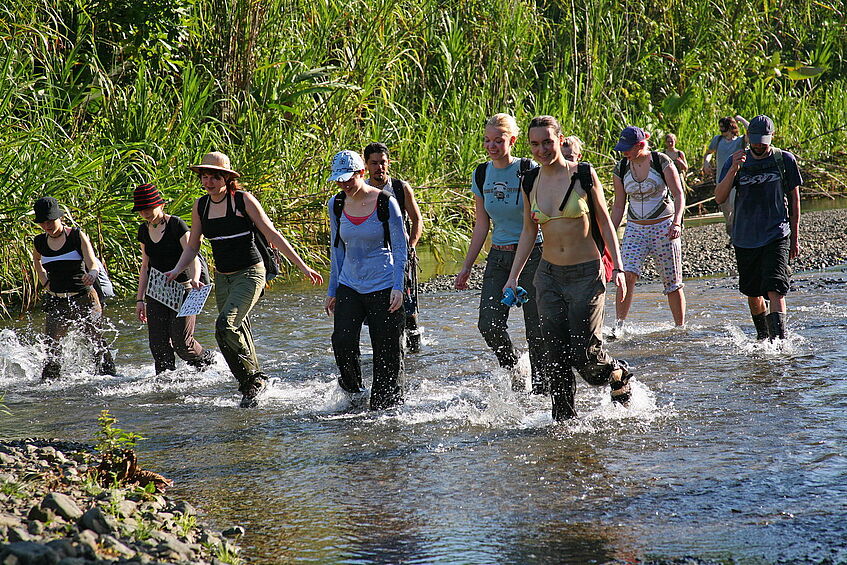
School trips to Costa Rica
School trips from Austria to Costa Rica have been taking place since 2006. They visit the La Gamba tropical station, admire active volcanoes, taste fruit at local markets and hike through various national parks. On the trip, the pupils learn about the diversity of tropical nature from the sea to over 3,400 metres above sea level and get a personal impression of the colourful life in the tropics.
During their stay at the tropical station, scientists provide an insight into their research work in the different ecosystems around La Gamba. The students also complete small science projects of their own. They also lend a hand when it comes to making cocoa. If you are interested in a school trip to Costa Rica, please contact us for an interview at tropenstation.botanik@univie.ac.at!
Schulreisen nach Costa Rica
Seit 2006 reisen Schulklassen aus Österreich nach Costa Rica. Sie besuchen die Tropenstation La Gamba, bestaunen aktive Vulkane, verkosten Früchte auf lokalen Märkten und erwandern verschiedene Nationalparks. Auf der Reise lernen die Schüler*innen die Vielfalt der tropischen Natur vom Meer bis auf über 3.400 Meter Seehöhe kennen und machen sich selbst ein Bild vom bunten Leben in den Tropen.
Während des Aufenthalts in der Tropenstation gewähren Wissenschaftler*innen einen Einblick in die ihre Forschungsarbeit in den unterschiedlichen Ökosystemen rund um La Gamba. Die Schüler*innen realisieren darüber hinaus selbst kleine naturwissenschaftliche Projekte. Außerdem legen sie Hand an, wenn es darum geht, Kakao herzustellen. Wenn Sie Interesse an einer Schulreise nach Costa Rica haben, melden Sie sich zu einem Gespräch bei uns unter tropenstation.botanik@univie.ac.at!
THE RAINFOREST OF THE AUSTRIANS
The south of Costa Rica is one of the most species-rich areas in Central America. Especially, the forests around the Golfo Dulce are home to a high number of plant and animal species. In the 1990s, with the help of Austrian support, deforestation was stopped and forest areas were bought out. This led to the establishment of the Piedras Blancas National Park, also known as the “Rainforest of the Austrians”. Since 2010, this forest has been considered saved.
DER REGENWALD DER ÖSTERREICHER
Der Süden Costa Ricas zählt zu den artenreichsten Gebieten Mittelamerikas. Vor allem die Wälder um den Golfo Dulce beherbergen eine hohe Zahl an Pflanzen- und Tierarten. In den 1990er Jahren wurden mit Hilfe österreichischer Unterstützung die Waldrodungen beendet und Waldgebiete freigekauft. So kam es zur Gründung des Piedras Blancas-Nationalparks, der auch als „Regenwald der Österreicher” bekannt ist. Seit 2010 gilt dieser Wald als gerettet.
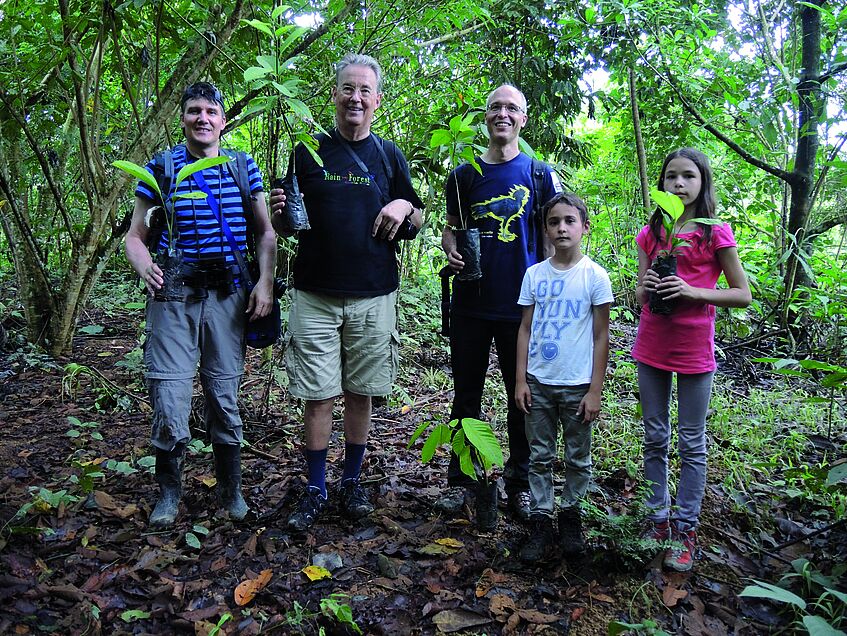
Securely into the future
In order to ensure the continued existence of the tropical station, the association to financially support the La Gamba Tropical Station was founded in 2003. Through membership fees, donations and sponsoring, the association raises the necessary funds to maintain the station. The association is open to anyone interested in the tropics, rainforests, Costa Rica or Latin America. The association does not only appeal to scientists who are interested in researching tropical rainforests, but also to people who are committed to nature conservation and sustainable tourism and who want to use the La Gamba tropical station to explore the rainforests. In 2016, the association's board travelled to Costa Rica and La Gamba, where they gained an understanding of various reforestation areas and planted trees together.
Sicher in die Zukunft
Um den Fortbestand der Tropenstation zu sichern, wurde im Jahr 2003 der Verein zur Förderung der Tropenstation La Gamba gegründet. Durch Mitgliedsbeiträge, Spenden und Sponsoring wirbt der Verein die erforderlichen Mittel für den Erhalt der Station ein. Der Verein steht allen Personen offen, die sich für die Tropen, für Regenwälder, für Costa Rica oder Lateinamerika interessieren. Der Verein wendet sich nicht nur an Wissenschaftler*innen, denen die Erforschung tropischer Regenwälder ein Anliegen ist, sondern auch an Personen, die sich dem Naturschutz und einem sanften Tourismus verpflichtet fühlen und die Tropenstation La Gamba für eine Regenwalderkundung nutzen wollen. Im Jahr 2016 reiste der Vereinsvorstand nach Costa Rica und La Gamba, machte sich ein Bild von verschiedenen Wiederbewaldungsflächen und pflanzte gemeinsam Bäume.
BUG POLLINATION
A completely new pollination system and a previously unknown flower scent have been discovered in Syngonium hastiferum. This aroma attracts bugs at night, which pollinate the flowers when they visit, instead of eating them as expected. Florian Etl and his team have been researching the pollination of Syngonium and other arum plants in La Gamba for many years. Further sensations in the field of pollination biology are not excluded.
WANZENBESTÄUBUNG
Bei Syngonium hastiferum wurden ein völlig neues Bestäubungssystem und ein bisher unbekannter Blütenduft entdeckt. Dieser Duft lockt in der Nacht Wanzen an, die bei ihrem Besuch die Blüten bestäuben, anstatt sie wie erwartet zu fressen. Seit vielen Jahren erforschen Florian Etl und sein Team die Bestäubung von Syngonium und anderen Aronstabgewächsen in La Gamba. Weitere Sensationen auf dem Gebiet der Bestäubungsbiologie sind nicht ausgeschlossen.
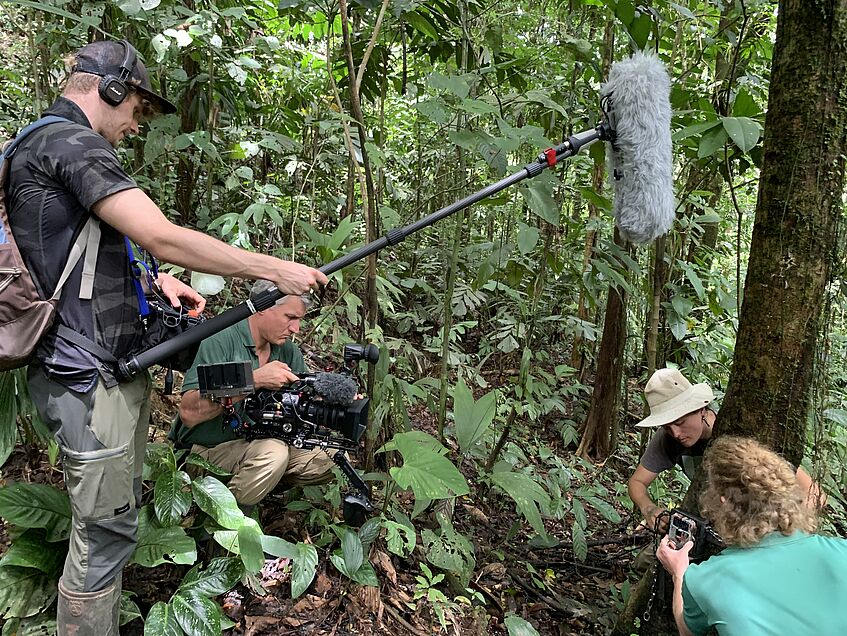
The Tropical Station in Newspapers, Radio and Television
Repeatedly, research work and other activities at the La Gamba Tropical Station have been reported on in newspaper articles, radio reports and films. In 2002, Barbara Puskas made an impressive Universum documentary about the work at the tropical station, which was broadcast by ORF and other television stations. Many people subsequently wanted to learn more about nature and science in the rainforest of the Austrians.
Shooting nature films in high quality requires not only luck but also a lot of know-how, experience and time to actually get the desired shots in frame. Most recently, filmmaker Peppo Wagner and his team were in La Gamba shooting a documentary on the climate crisis, which was also broadcasted on ORF.
Die Tropenstation in Zeitungen, Radio und Fernsehen
Immer wieder wurde und wird in Zeitungsartikeln, Radioberichten und Filmen über Forschungsarbeiten und andere Aktivitäten der Tropenstation La Gamba berichtet. Im Jahr 2002 drehte Barbara Puskas eine beeindruckende Universum-Dokumentation über die Arbeit an der Tropenstation, die vom ORF und anderen Fernsehanstalten ausgestrahlt wurde. Viele Menschen wollten dahinauf mehr über die Natur und Wissenschaft im Regenwald der Österreicher erfahren.
Um Naturfilme in hoher Qualität zu drehen, bedarf es neben Glück auch viel Knowhow, Erfahrung und Zeit, um die gewünschten Aufnahmen auch wirklich in den Kasten zu bekommen. Zuletzt waren der Filmemacher Peppo Wagner und sein Team in La Gamba und drehten einen Dokumentarfilm zur Klimakrise, welcher im ORF ausgestrahlt wurde.
ANIMALS IN THE STATIONS GARDEN
Many animals live in the garden of the tropical station. Agoutis search for food on the ground with their young during the day, birds gather at the feeding station or explore the dining hall. The brown-backed toucan (Ramphastos swainsonii), which belongs to the woodpecker family, is especially common. It feeds on fruits, but also raids bird nests with its all-purpose beak as well as preying on smaller reptiles, amphibians and insects.
TIERE IM STATIONSGARTEN
Im Stationsgarten leben viele Tiere. Agutis suchen tagsüber mit den Jungtieren am Boden nach Fressbarem, Vögel sammeln sich an der Futterstelle oder erkunden den Speisesaal. Besonders häufig ist der Braunrückentukan (Ramphastos swainsonii) anzutreffen, der zur Verwandtschaft der Spechtvögel zählt. Er ernährt sich von Früchten, plündert mit seinem Allzweck-Schnabel aber auch Vogelnester und erbeutet kleinere Reptilien, Amphibien sowie Insekten.
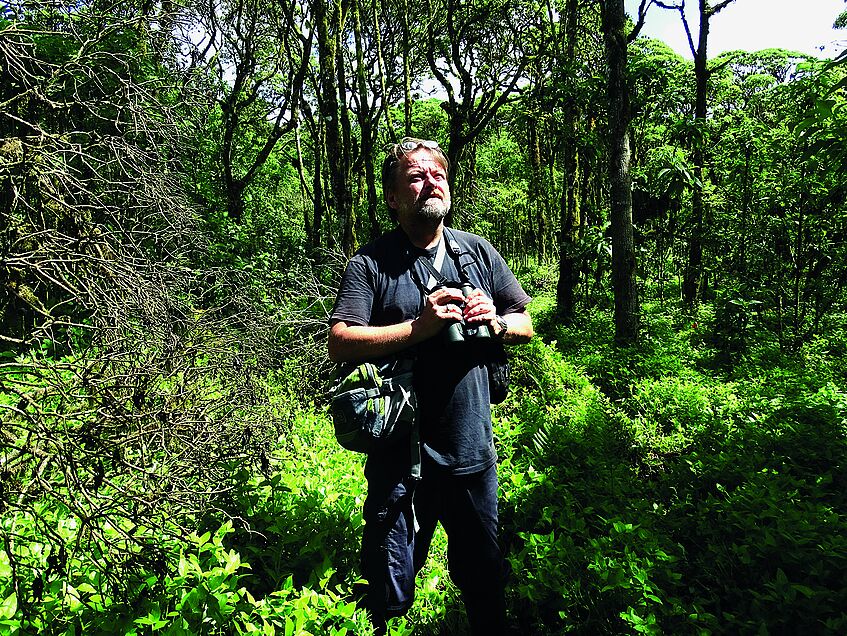
Nature Conservation Research
The variety of different habitats from largely undisturbed rainforest to open cultivated land results in a richness of bird species. Species such as the Brown-tailed Amazilia (Amazilia tzacatl) colonise a wide range of habitats, others such as the Smooth-billed Ani (Crotophaga ani) are found exclusively in open land, while the Black-cheeked Ant-Tanager (Habia atrimaxillaris) and its peers live only in rainforest undergrowth.
For undergrowth dwellers, the reforestation areas within the Biological Corridor around La Gamba are of great importance. Christian H. Schulze of the University of Vienna is investigating the importance of such secondary forests for different animal groups by documenting the occupation of differently aged reforestation areas by forest-dwelling animal species over a longer period of time.
Naturschutz-Forschung
Die Vielzahl unterschiedlicher Lebensräume von weitgehend ungestörtem Regenwald bis zu offenem Kulturland hat einen Reichtum an Vogelarten zur Folge. Arten wie die Braunschwanz-Amazilie (Amazilia tzacatl) besiedeln ein breites Spektrum an Lebensräumen, andere wie der Glattschnabel-Ani (Crotophaga ani) sind ausschließlich im Offenland zu finden, während der Schwarzwangen-Ameisentangar (Habia atrimaxillaris) und Gleichgesinnte nur im Unterwuchs des Regenwalds leben.
Für Unterwuchs-Bewohner spielen die Wiederbewaldungsflächen im Biologischen Korridor um La Gamba eine wichtige Rolle. Christian H. Schulze von der Universität Wien untersucht die Bedeutung solcher Sekundärwälder für unterschiedliche Tiergruppen, indem er die Besiedlung unterschiedlich alter Wiederbewaldungsflächen durch wald-bewohnende Tierarten über einen längeren Zeitraum dokumentiert.
STATION HISTORY
The idea to establish a field station in Costa Rica was conceived in 1993, when the idealist and visionary Michael Schnitzler laid the initial foundation stone. Shortly afterwards, two enthusiastic students, Werner Huber and Anton Weissenhofer (University of Vienna), came to La Gamba. Together with the ideological and financial support of many other enthusiastic people, they built the La Gamba Tropical Station. We would like to take this opportunity to thank them all. Let us continue to work together. Pura Vida!
STATIONSGESCHICHTE
Die Idee eine Feldstation in Costa Rica zu errichten entstand im Jahre 1993. Der Idealist und Visionär Michael Schnitzler legte den ersten Stein. Kurz darauf kamen die beiden enthusiastische Studenten Werner Huber und Anton Weissenhofer (Universität Wien) nach La Gamba. Sie bauten gemeinsam mit der ideellen und finanziellen Unterstützung von vielen weiteren begeisterten Menschen die Tropenstation La Gamba auf. Ihnen allen sei an dieser Stelle herzlich gedankt. Lasst uns weiterhin „an einem Strang“ ziehen. Pura Vida!
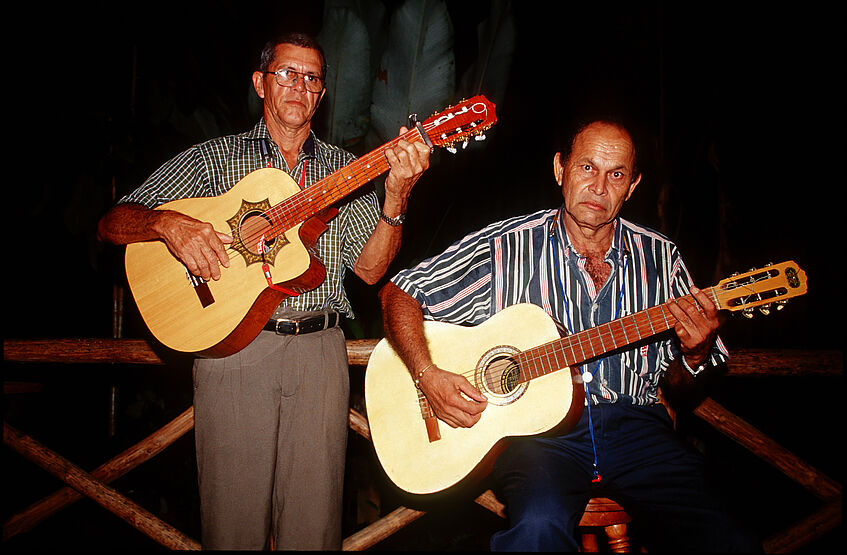
Felo und Camacho
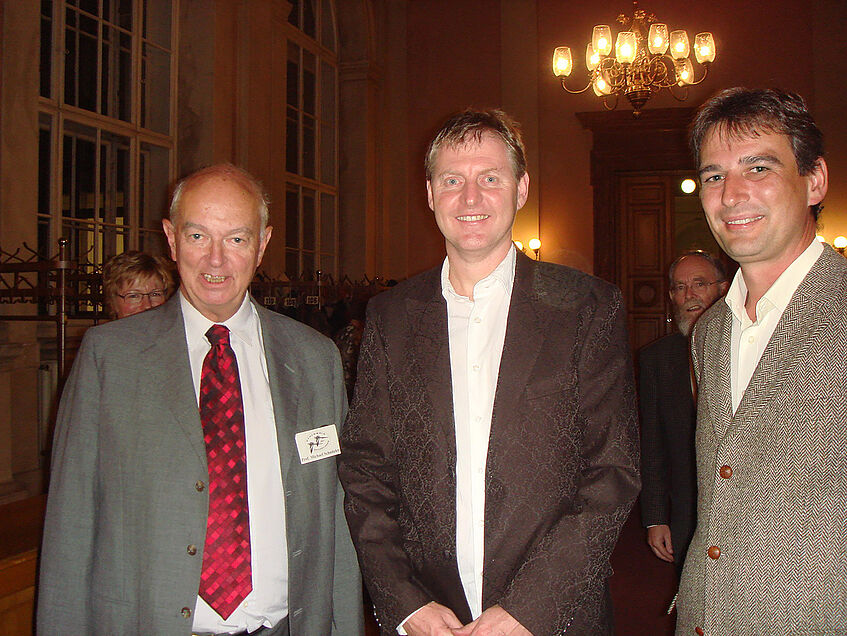
Michael Schnitzler, Werner Huber & Anton Weissenhofer
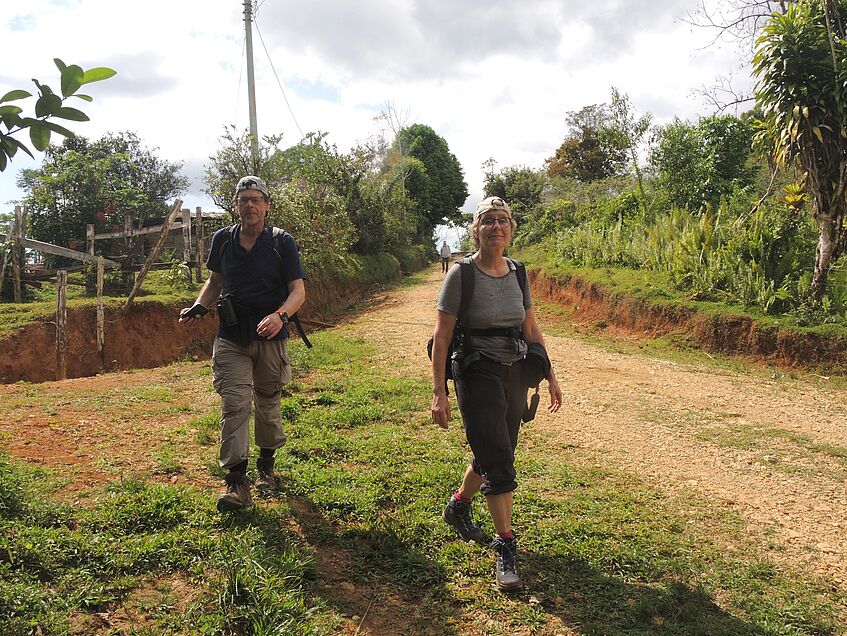
Frank & Veronika Fischbach
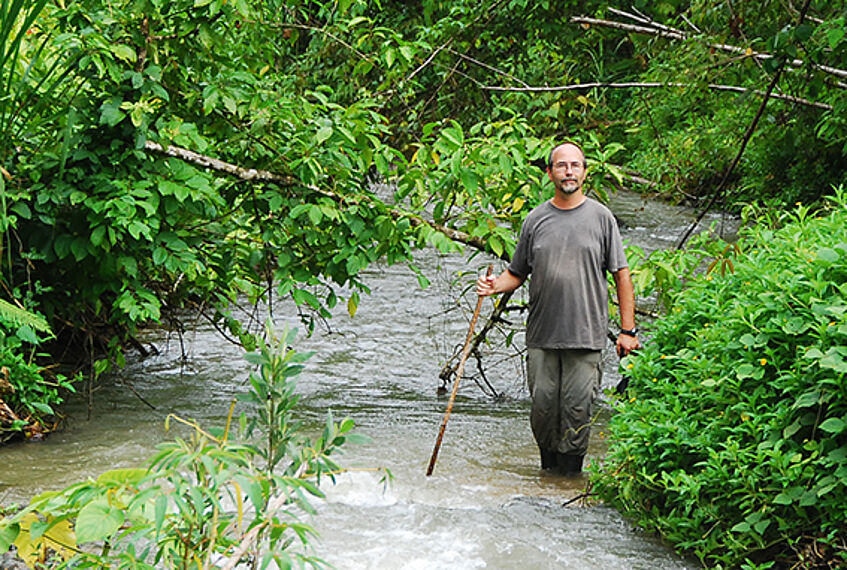
Konrad Fiedler
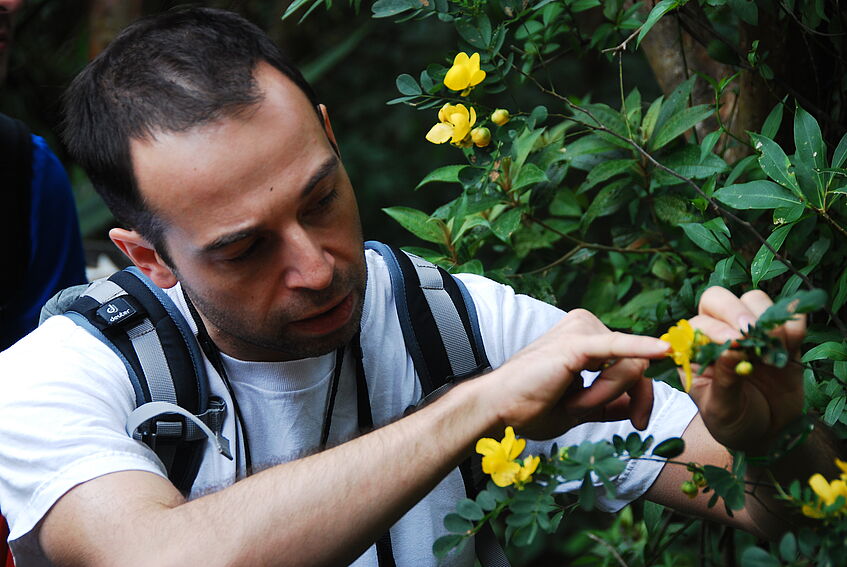
Jürg Schönenberger
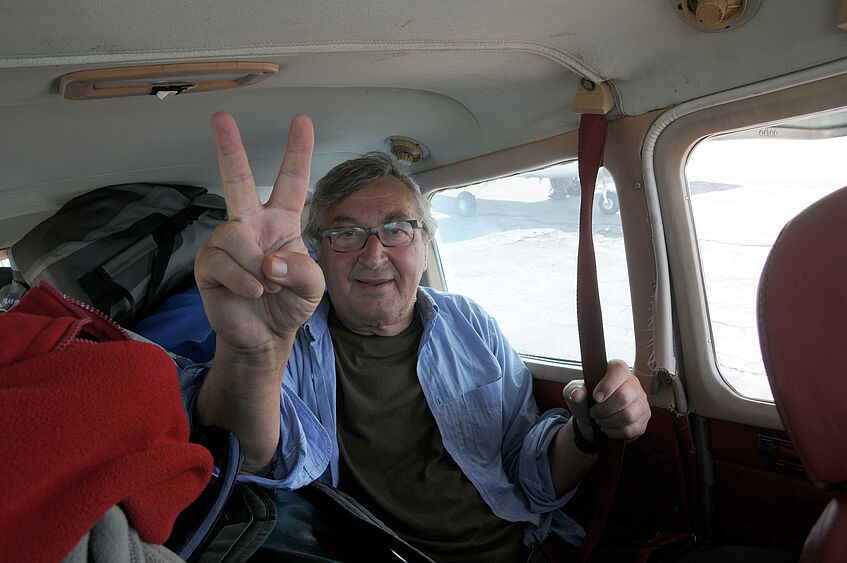
Friedrich Schiemer
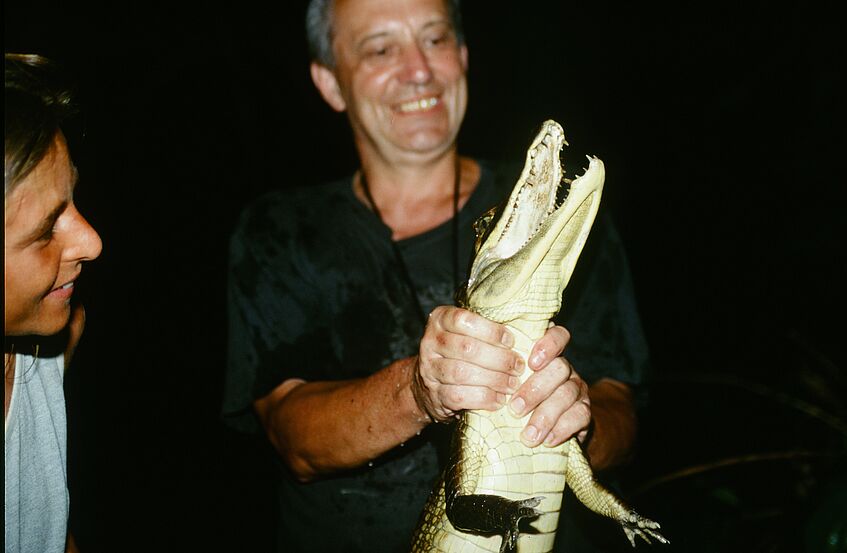
Peter Weish

Wolfgang Wanek
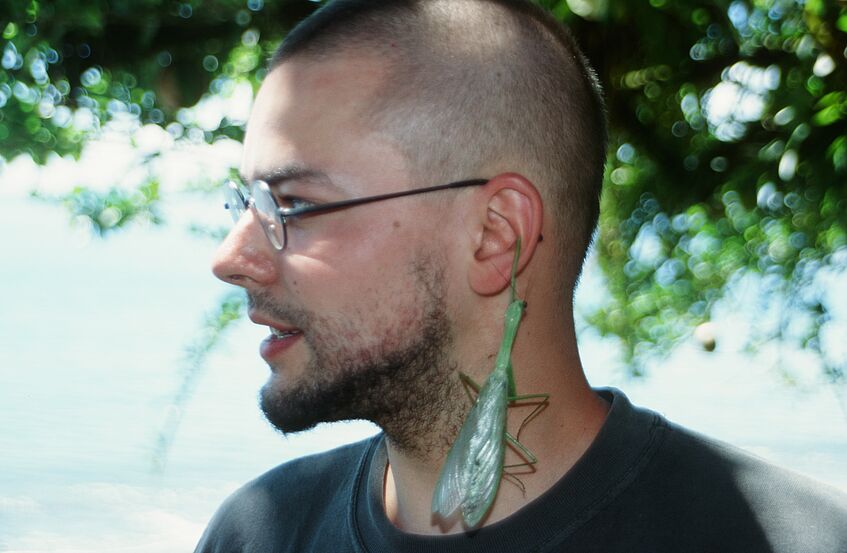
Daniel Schaber
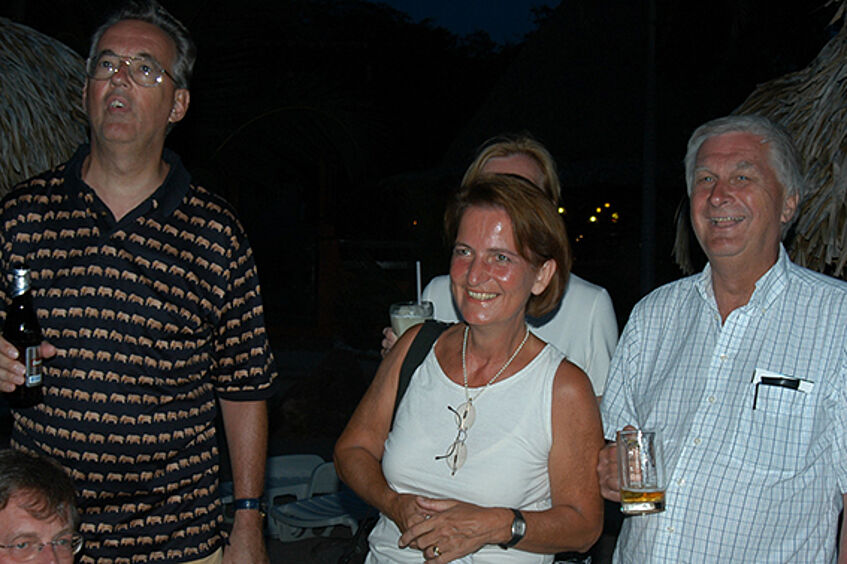
Walter Rechberger & Jörg Hoyer
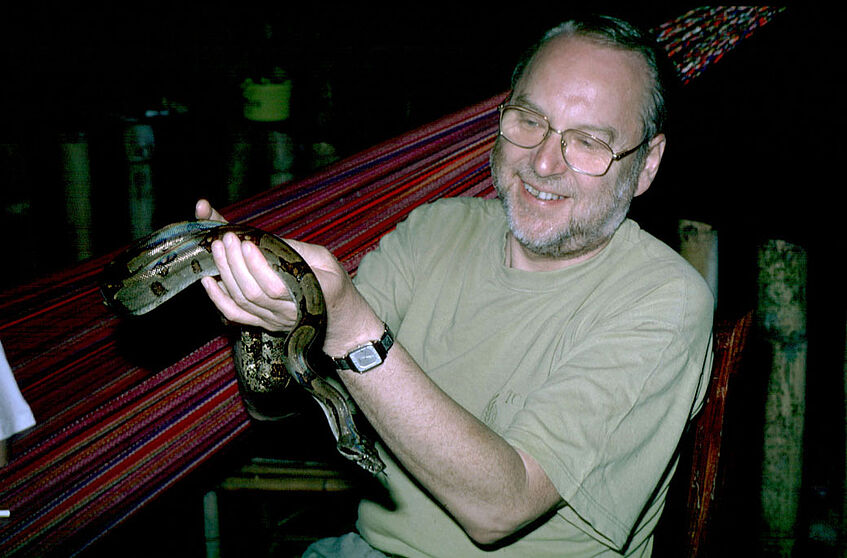
Anton Weber
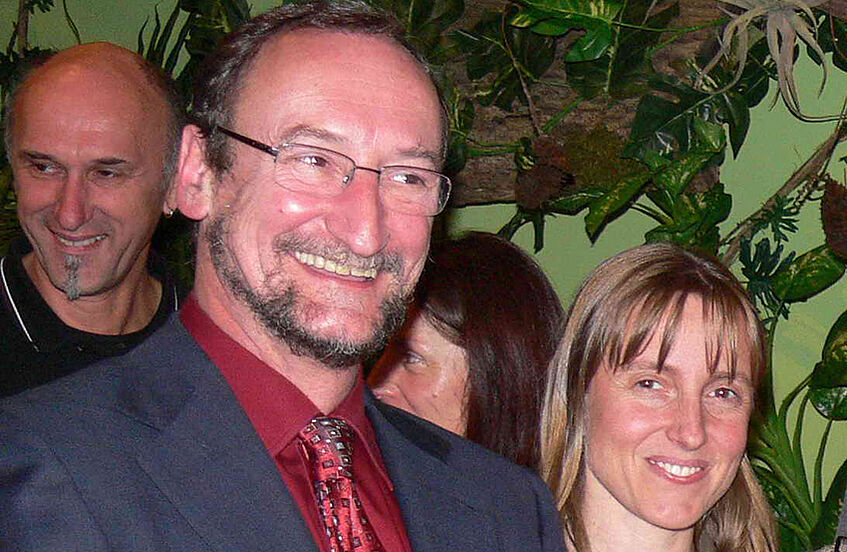
Gerhard Aubrecht & Susanne Pamperl
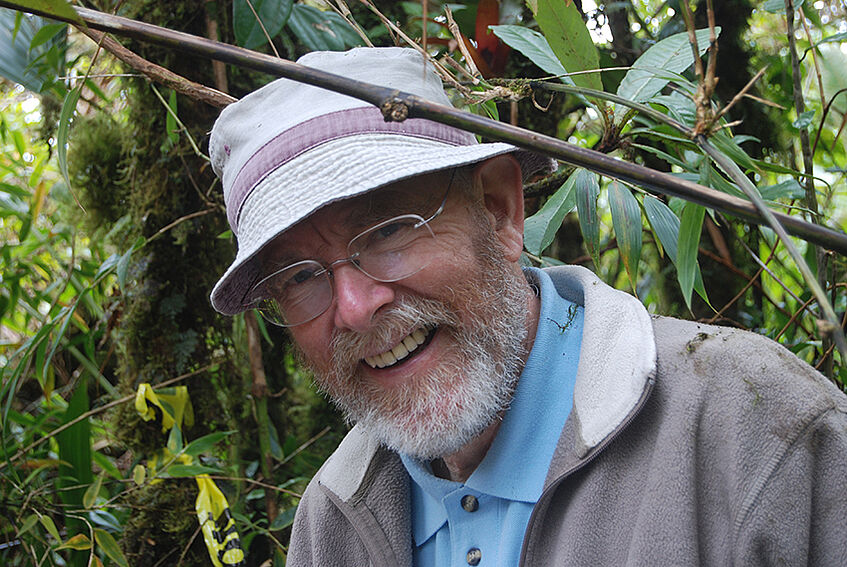
Roland Albert

Walter Hödl
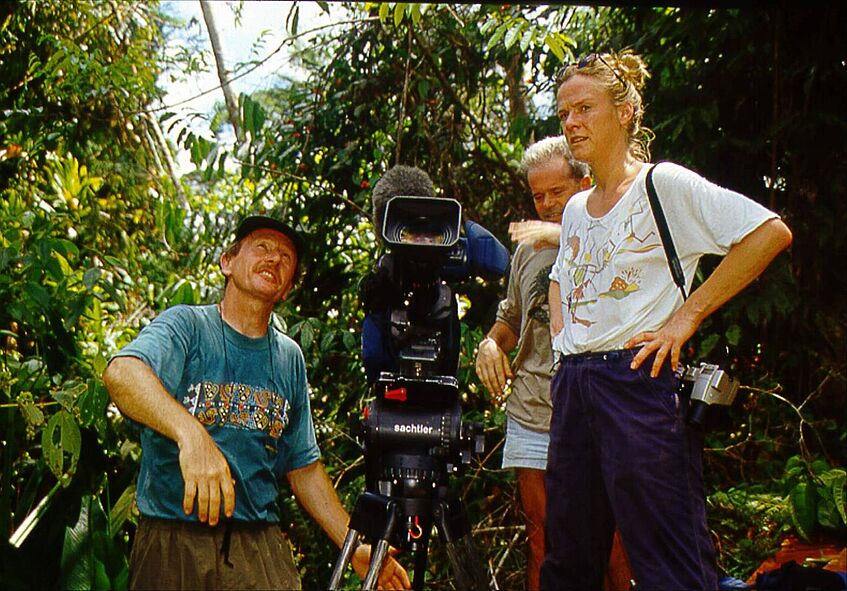
Barbara Puskas
GOLFITO ON THE GOLFO DULCE
The port town of Golfito is located on the Golfo Dulce, the “Sweet Gulf”. The small town was a stronghold of banana export and the headquarters of the United Fruit Company. There are still well-preserved buildings from the banana boom, such as the La Bomba bar. After the end of the banana boom in the 1980s, a duty-free zone was opened and is now the most important employer. Recently, more and more tourists have been coming to the region to explore the nature at Golfo Dulce.
GOLFITO AM GOLFO DULCE
Die Hafenstadt Golfito liegt am Golfo Dulce, dem „Süßen Golf”. Die Kleinstadt war eine Hochburg des Bananenexportes und Hauptsitz der United Fruit Company. Es gibt noch gut erhaltenen Gebäude aus der Bananenzeit wie die Bar La Bomba. Nach dem Ende des Bananenbooms in den 1980er Jahren wurde eine Zollfreizone eröffnet, die nun wichtigster Arbeitgeber ist. In letzter Zeit kommen immer mehr Touristen in die Region und erkunden die Natur am Golfo Dulce.
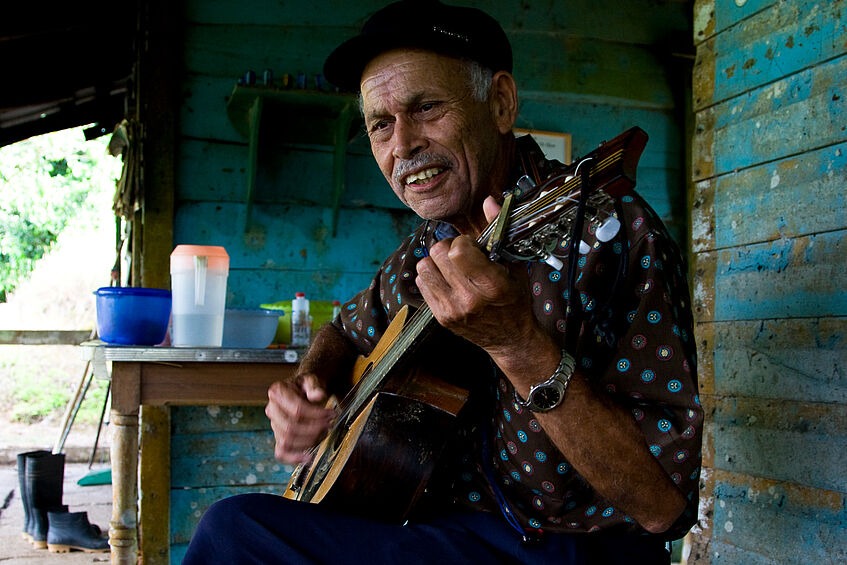
Oscar Efrain Camacho - “Musica de La Gamba”
The region's heyday was the “banana boom” in the middle of the 20th century. Many people came to work in the south of Costa Rica from other areas. Also, the parents of the tailor and musician Oscar Efrain Camacho settled in the wild area around Golfito. The parents bought a plot of land in La Gamba and son Efrain chose to tailor as his livelihood, he primarily tailored trousers for school uniforms. Until recently, he lived with his brother in an old house without electricity on the outskirts of La Gamba. Camacho has always been passionate about music. He loved to sing and started playing the guitar at the age of 18. Since then, the self-taught musician sings and plays without sheet music and is always happy when his listeners share the beautiful moments of life and music with him.
Oscar Efrain Camacho – „Musica de La Gamba"
Die Blütezeit der Region war die „Bananenzeit“ in der Mitte des 20. Jahrhunderts. Viele Menschen kamen damals für die Arbeit aus anderen Gebieten Costa Ricas in den Süden des Landes. Auch die Eltern des Schneiders und Musikers Oscar Efrain Camacho siedelten sich in der wilden Gegend um Golfito an. Die Eltern kauften sich ein Grundstück in La Gamba und Sohn Efrain wählte das Schneiderhandwerk als Lebensunterhalt – er schneiderte vor allem Hosen für Schuluniformen. In einem alten Haus ohne Stromanschluss lebte er bis vor kurzem am Rande La Gambas gemeinsam mit seinem Bruder. Immer schon begeisterte Camacho die Musik. Er sang gerne und begann mit 18 Jahren Gitarre zu spielen. Seither singt und spielt der Autodidakt ohne Noten und freut sich stets, wenn seine Zuhörer die schönen Momente des Lebens und der Musik mit ihm teilen.
